The Bravia 8 is Sony’s flagship OLED model for 2024, aimed at attracting image quality enthusiasts. This television delivers outstanding picture quality with OLED’s hallmark deep blacks, vivid, precise colours, and infinite contrast, creating a highly realistic viewing experience. Dark scenes are presented with perfect black levels, while brighter elements are rendered with impressive detail, giving each frame a distinctive cinematic feel. With a 120 Hz refresh rate, the Bravia 8 ensures excellent motion fluidity, making it ideal for sports, gaming, and fast-paced movie scenes. Its ability to provide a ghost-free image allows viewers to appreciate fine details even during rapid action sequences, a feature that will particularly appeal to fans of dynamic content. Running on the Google TV platform, the Bravia 8 offers an intuitive, fast, and user-friendly interface. This system provides seamless access to popular applications and favourite content. The clear and responsive interface enhances the viewing experience, making navigation smooth and straightforward. The practical, backlit remote control adds further convenience and can be charged via USB-C, distinguishing it from traditional battery-powered remotes. This thoughtful design ensures easy use, even in low-light conditions. However, despite its strengths, the Bravia 8 does have some limitations. With an SDR brightness level of 330 nits, it may not perform optimally in very bright rooms, potentially leading to reflections or a less vivid display in strong ambient light. Users who valued the superior gradation in earlier Sony models may find this a minor drawback. Additionally, the television features only two HDMI 2.1 ports, which could be limiting for gamers who use multiple consoles or other high-bandwidth devices. Overall, the Sony Bravia 8 is a premium OLED television that excels in most areas. Its superb picture quality, advanced gaming features, and solid sound performance make it an excellent choice for a reliable OLED model in 2024. While there are some areas for improvement, particularly in SDR brightness and connectivity, the Bravia 8’s overall performance and features make it a compelling option for both everyday use and immersive viewing experiences.
- Matching (Score)
- Our verdict
- TV appearance
- Where to buy
- Contrast and black detail
- HDR effect quality
- Factory color reproduction
- Color reproduction after calibration
- Smoothness of tonal transitions
- Image scaling and smoothness of tonal transitions
- Blur and motion smoothness
- Console compatibility and gaming features
- Input lag
- Compatibility with PC
- Viewing angles
- TV efficiency during daytime
- Details about the matrix
- TV features
- Apps
- Playing files from USB
- Sound
Sony Bravia 8 (XR80) vs Samsung OLED S85F (QD-OLED)
Direct compare
Check the best price offer:
Sony Bravia 8 (XR80)Check the best price offer:
Samsung OLED S85F (QD-OLED)BRAVIA 8 / XR80
S85F / FAE / FAU
Available screen sizes: 55”

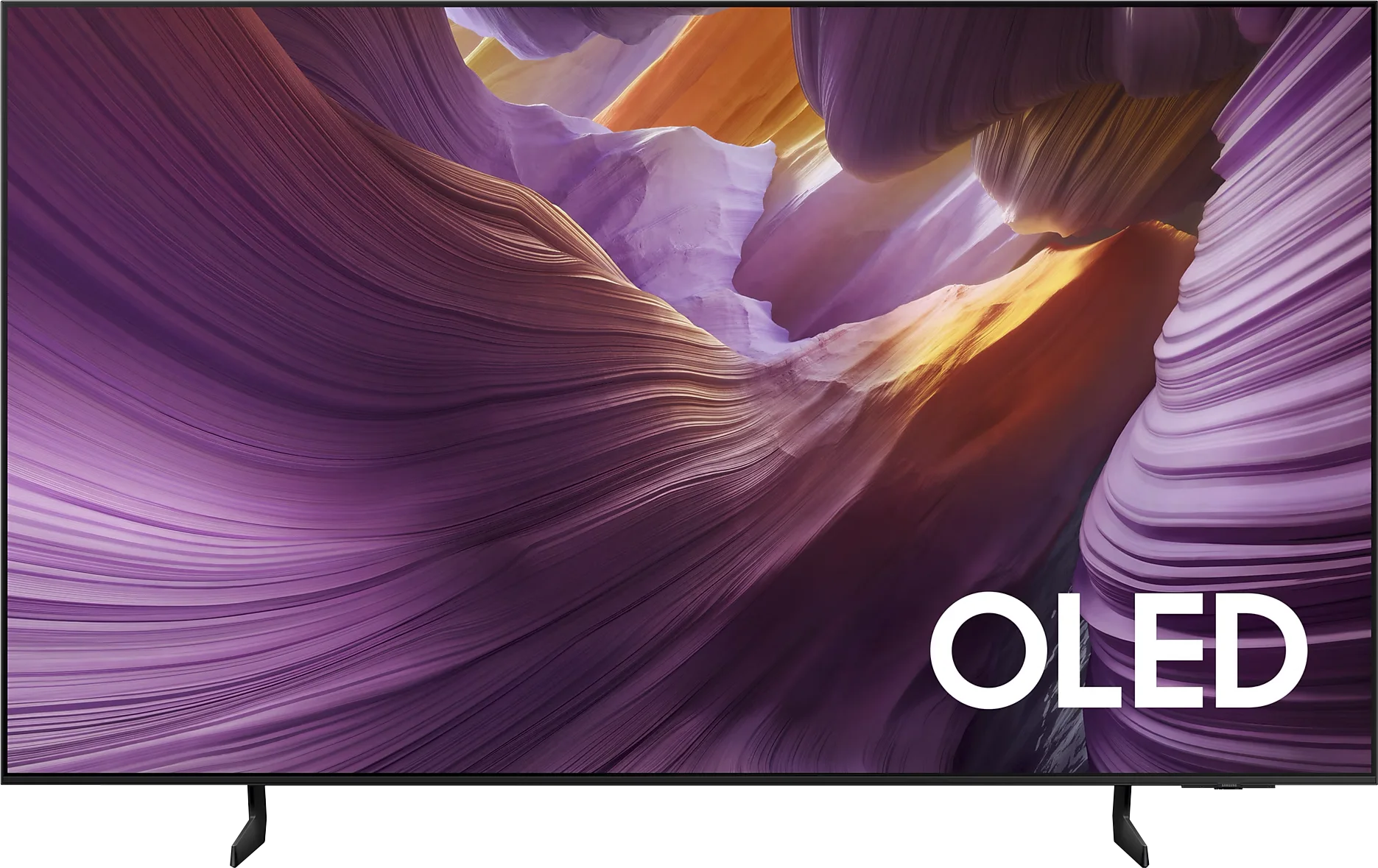
Panel type: WRGB OLED
Resolution: 3840x2160
System: Google TV
Model year: 2024
Complete the survey to find out the result

Panel type: QD-OLED
Resolution: 3840x2160
System: Tizen
Model year: 2025
Complete the survey to find out the result

Overall rating
7.8
8.0
Movies and series in UHD quality
7.6
8.3
Classic TV, YouTube
8.0
9.0
Sports broadcasts (TV and apps)
8.1
8.8
Gaming on console
8.8
9.3
TV as a computer monitor
7.6
7.6
Watching in bright light
5.6
5.1
Utility functions
9.4
7.3
Apps
9.6
8.7
Sound quality
7.5
7.2
Complete the survey to find out what fits your preferences
Advantages
Excellent contrast
Google TV – intuitive system, easy access to applications, backlit remote.
Very good motion smoothness – 120 Hz, advanced smoothing system.
Great Dolby Vision support
Very good viewing angles
Superb built-in audio system
Amazing black and contrast
Incredible color palette coverage thanks to the QD-OLED panel
Great picture in SDR and HDR content
High color fidelity after calibration
Very good image smoothness – 120 Hz OLED panel
Rich set of features for gamers: VRR, Game Bar, low input lag
4 HDMI 2.1 ports with full bandwidth of 48 Gbps
Advanced and smoothly operating Tizen system
Solar Remote with multiple capabilities
Disadvantages
Poor gradation – visible connections on dark and light colors
Brightness during the day – better for night sessions than for use in daylight
Only 2 HDMI 2.1 ports - one of which is ARC.
No USB recording function and PiP
No Dolby Vision
Slight cherry black under very strong external light (not visible during viewing in cinematic conditions)
No HGiG function*
* This function disappeared with the software update 1110.7 – we are monitoring this situation continuously.
Our verdict
Samsung S85F with a QD-OLED panel can be surprising – and surprisingly positively so. Before the tests, we didn't think that in the case of televisions, which are often referred to in the context of "panel lottery," one could come across something beneficial for users. Yet, in this case, especially in the 55-inch version, it fully succeeded. The QD-OLED panel, as is fitting for organic technology, offers nearly perfect black and contrast in cinematic conditions. However, the difference lies in the way colors are reproduced – here it is simply outstanding. The color gamut coverage is impressive, and after slight calibration, the colors become almost exemplary. Motion smoothness is equally high. The 120 Hz panel handles both sports and action movies exceptionally well. And if someone plans to connect a console to the S85F, they will receive a full set of advantages: low input lag, variable refresh rate, Game Bar, and full HDMI 2.1 support. In daily use, we were assisted by the Tizen system – closed, but incredibly refined. It responds quickly, offers a rich selection of applications, and features such as AirPlay and voice control make it hard to find something more complete in this category. Indeed, the S85F is not without its flaws. However, the balance of advantages and disadvantages is exceptionally favorable here. One could even get the impression that this is one of the best televisions in its price segment.
TV appearance




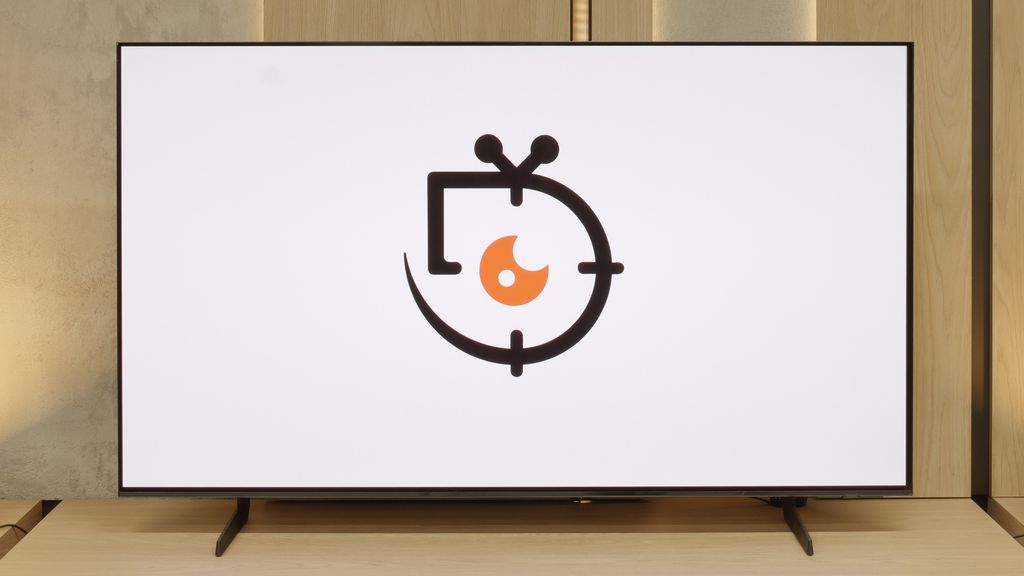
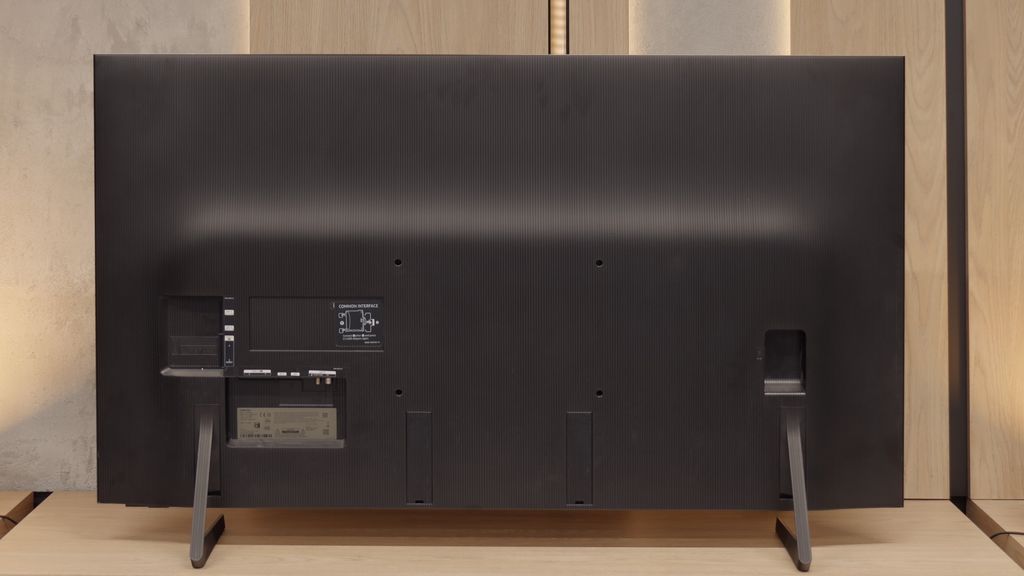
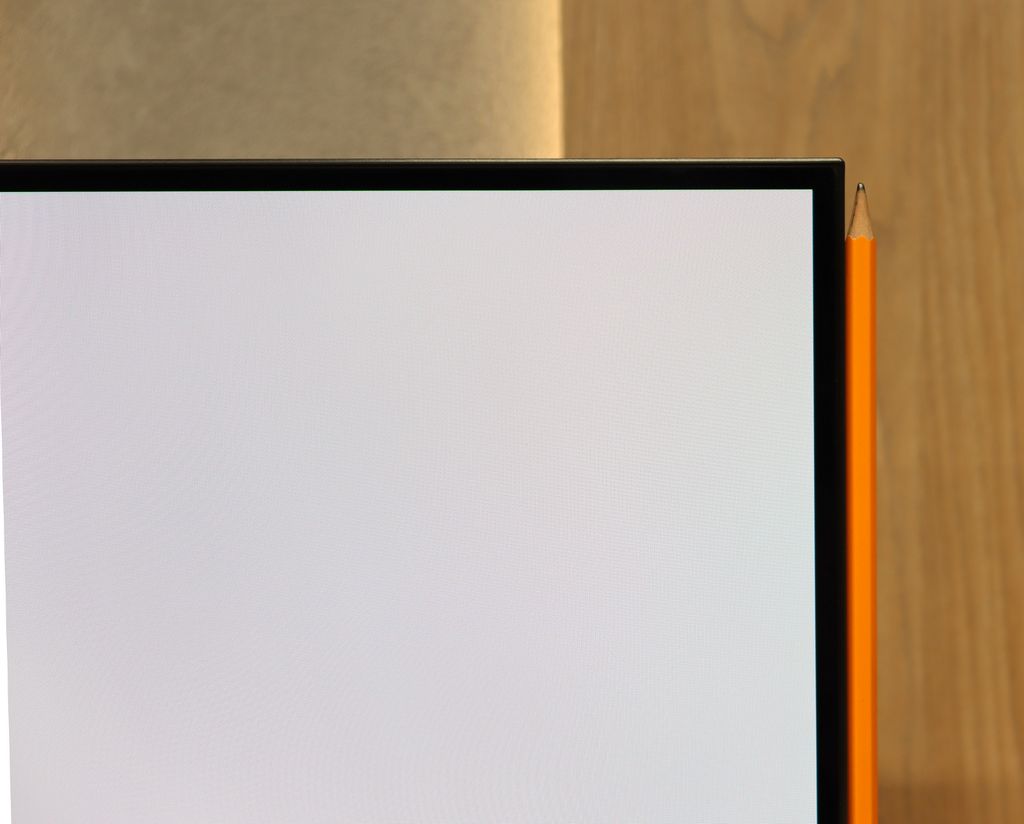
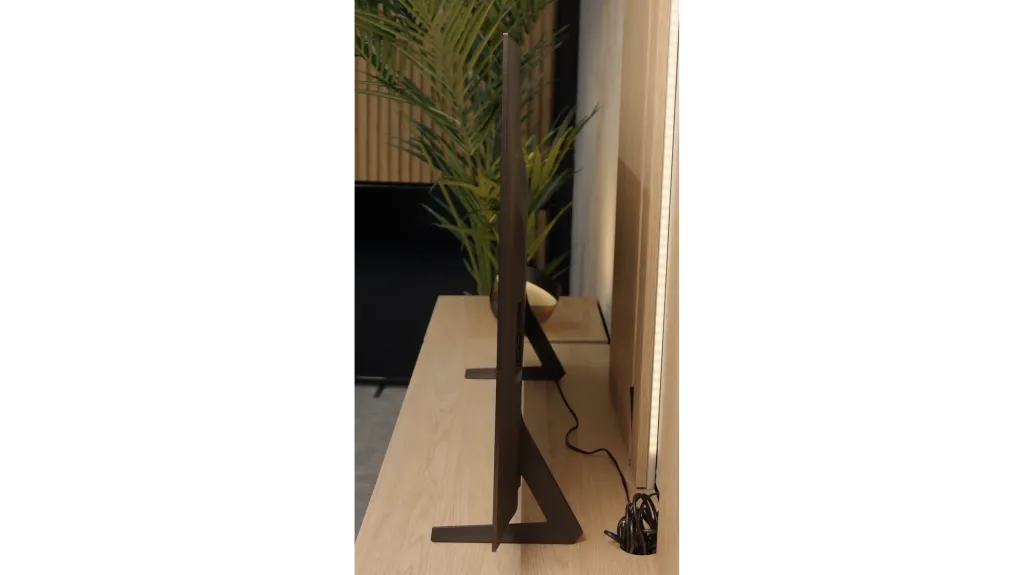
Where to buy
Contrast and black detail
10/10
10/10
Contrast:

Result
∞:1

Result
∞:1

Result
∞:1

Result
∞:1

Result
∞:1

Result
∞:1

Result
∞:1

Result
∞:1

Result
∞:1

Result
∞:1
Halo effect and black detail visibility:

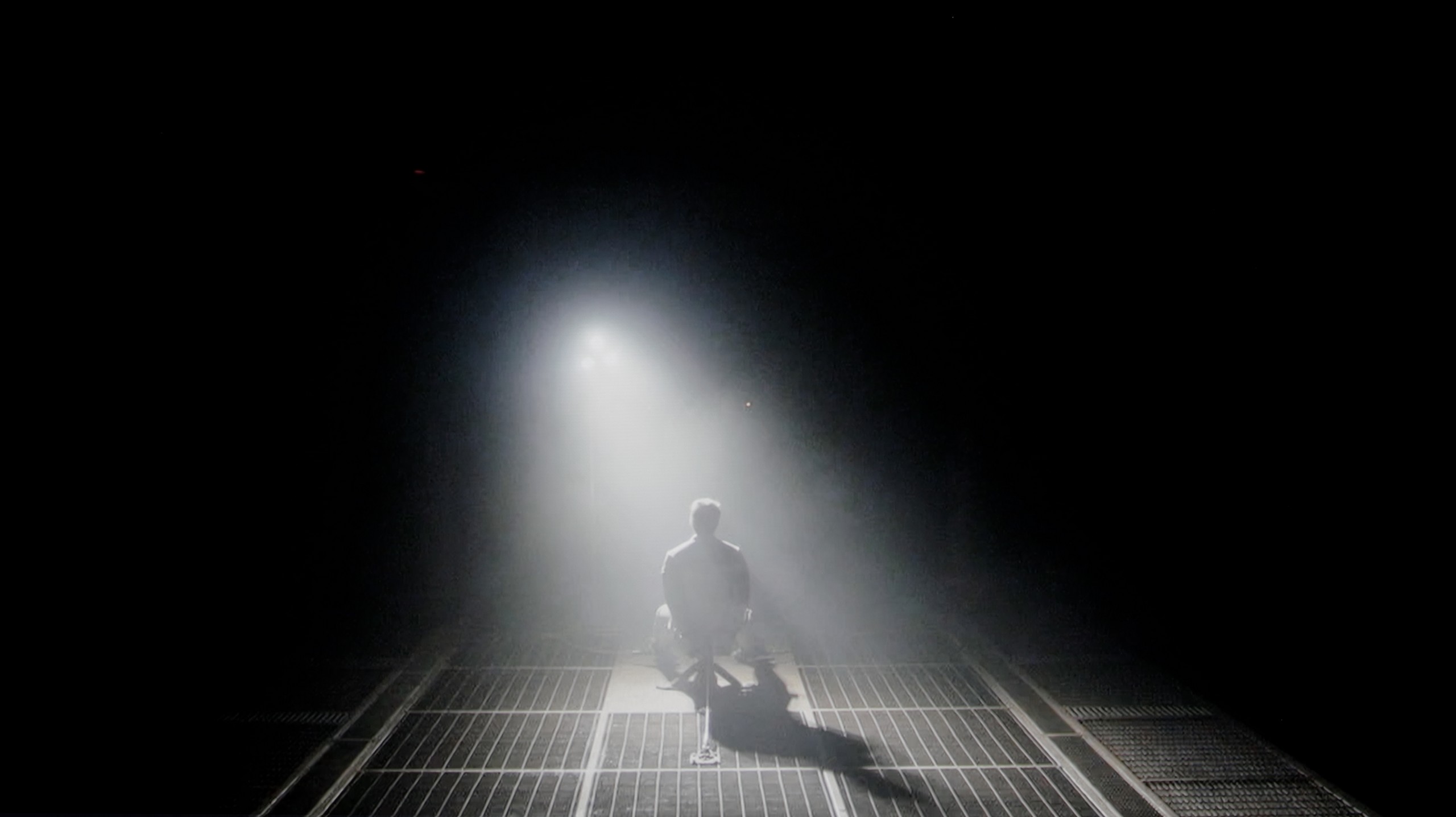
The Sony Bravia 8 television, equipped with an OLED matrix, delivers exceptional picture quality with outstanding black levels and contrast. Thanks to OLED technology, each pixel emits its own light, ensuring deep blacks and precise light reproduction. During testing with scenes from films like Oblivion and The Revenant, the Bravia 8 showcased impeccable separation between light and dark elements, producing detailed and lifelike images, even in challenging high-contrast scenarios. This performance places the Bravia 8 among the top models in its class.
The Samsung S85F in the 55-inch version has something exceptional – it features a QD-OLED panel. This sounds quite surprising, but that’s the fact, at least in Poland. So the question arises: is the difference from last year's S85D with a WOLED panel even noticeable? Yes, although in this particular test – black levels and contrast – it practically makes no difference.
Regardless of the scene, the S85F delivers infinite contrast and perfect black levels that we expect from any OLED. These results can amaze even the most demanding movie enthusiasts. It’s worth noting that such deep blacks can only be offered by televisions with organic panels – and it doesn’t matter whether it’s WOLED or QD-OLED. So, if you dream of a screen that can "turn off" the light in a scene as effectively as an independent cinema in a dark room, the S85F is one of those televisions.
HDR effect quality
6.8/10
6.2/10
Luminance measurements in HDR:

Result
849 nit

Result
865 nit

Result
888 nit

Result
880 nit

Result
469 nit

Result
666 nit

Result
703 nit

Result
742 nit

Result
732 nit

Result
433 nit
Scene from the movie “Pan” (about 2800 nits)


Scene from the movie “Billy Lynn” (about 1100 nits)


Static HDR10


Dynamic: Dolby Vision
Dynamic: HDR10+


HDR luminance chart:
Samsung OLED S85F (QD-OLED)
HDR luminance
Sony Bravia 8 (XR80)
HDR luminance
Luminance of RGB colors
The Sony Bravia 8 performs commendably in terms of HDR brightness, reaching a peak of 880 nits. This level is sufficient to render lighting effects effectively in most scenes. In tested clips from Life of Pi and Sicario 2, the television demonstrated vibrant, detailed imagery that captured the atmosphere of these films beautifully.
However, challenges arise in scenes with consistently high brightness, such as in The Meg, where the display's limitations become apparent. In these situations, OLED technology can struggle, with brightness levels dropping to around 450 nits, which can be less satisfying when intense illumination is needed throughout a scene. Despite this, the Sony Bravia 8 remains a strong contender, offering excellent DCI-P3 colour gamut coverage and 74% BT.2020 coverage. These attributes result in rich, accurate colours and fine details, enhancing HDR content and providing an enjoyable viewing experience.
As an OLED, the Samsung S85F can really shine – literally. Under favorable conditions, it can generate brightness exceeding 750 nits. This is hugely significant because most movies are created with displays around 1000 nits in mind. In practice, this means that in scenes with moderately large bright elements, the image can look simply fantastic. However, it's not always so rosy. When there is a massive amount of light on the screen – whether it's a vast bright background or an entire screen filled with white – the S85F must tone it down. The brightness can drop by even four times in such scenes. This limitation is known to basically every OLED in this price range, so we don't consider it a particular failing. However, something that deserves praise is what sets this model apart from the competition – color gamut coverage. Thanks to the QD-OLED panel, our colorimeter showed values exceeding 100% DCI-P3 coverage and as high as 86% for the ultra-wide BT.2020 palette. Such results are hard to find even in televisions that cost several times more.
Factory color reproduction
7.2/10
5.5/10


Factory Mode
After calibration


Factory Mode
After calibration
The best factory mode on the Sony Bravia 8 television is IMAX Enhanced, offering the most cinematic experience, though it isn't perfectly calibrated. The TV attempts to replicate cinematic settings as accurately as possible, but some issues are evident. Starting with white balance, both for SDR and 4K content, there is a noticeable blue dominance, making the image appear too cold and lacking in natural warmth. Colour Checker tests reveal a shift towards cooler tones, affecting colour accuracy and making the image feel less lifelike.
Regarding brightness and contrast, the gamma shows a significant drop towards the end of the spectrum, meaning dark details may become too shadowed, and bright areas too intense, causing a loss of subtlety and detail. This is particularly noticeable in the sky, as seen in the comparison image. Additionally, the EOTF curve is considerably above the reference value, making bright elements overly intense. As a result, users may experience an unnatural image, with bright parts losing detail and negatively impacting the overall viewing quality.
Samsung, as befits a manufacturer with ambitions, equipped the S85F with a mode called Filmmaker. Its task is simple: to make the colors on the newly purchased television as true to what the director wanted us to see as possible. Sounds great… but, as often happens, a great-sounding theory doesn’t always translate into perfect practice.
In the tested unit, it quickly became apparent that the image – due to an excess of blue and red – looked as if someone had overdone the saturation a bit. As a result, quite significant color errors appeared, particularly in 4K content. To make matters worse, there was a brightness issue – the S85F could brighten most scenes more than it should, taking away their intended mood.
Fortunately, Samsung televisions, including the S85F, offer an impressive number of settings for advanced calibrators. This means we could check what this panel is truly capable of when it gets into the right hands.
Color reproduction after calibration
8.2/10
9.3/10

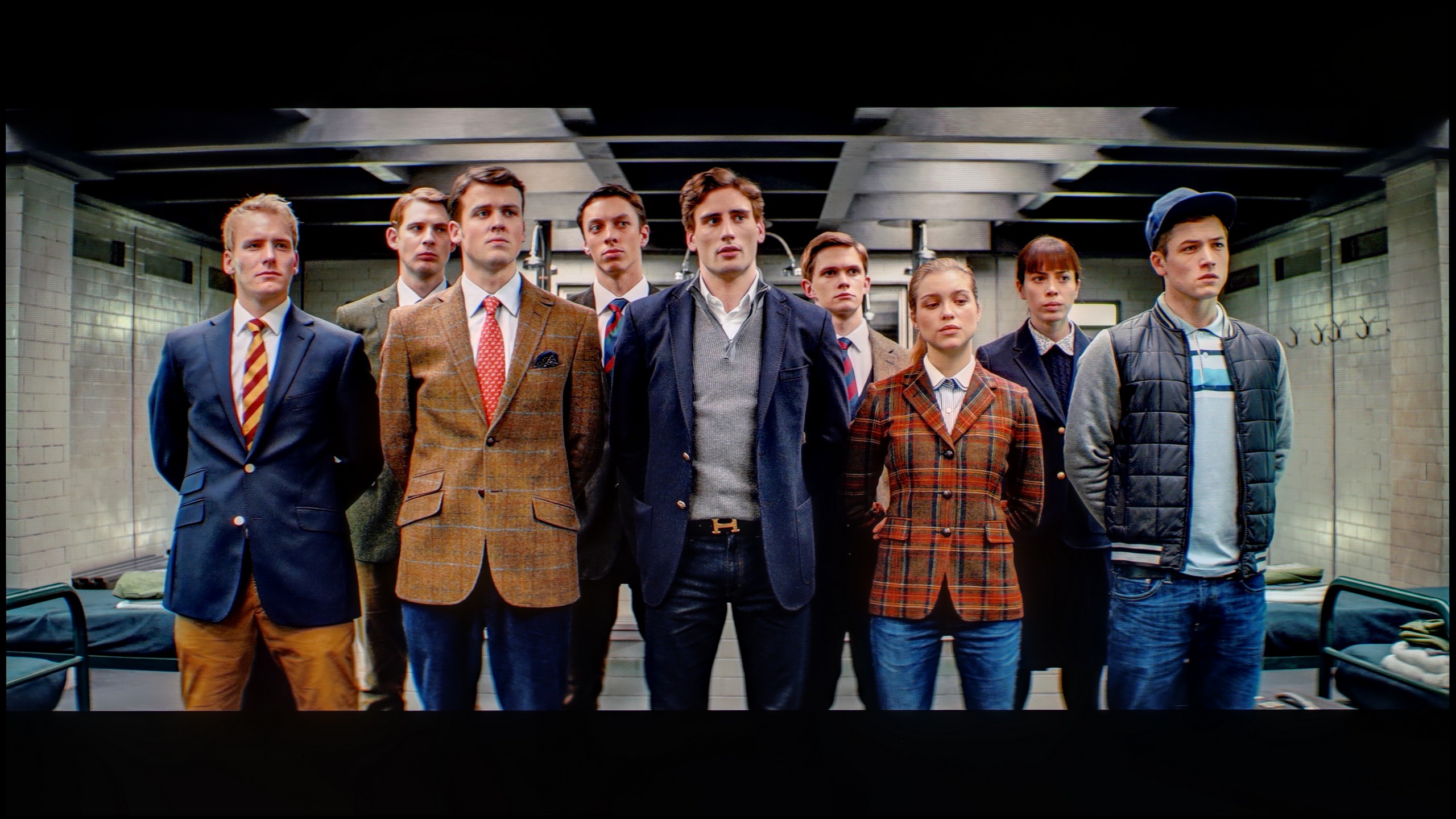

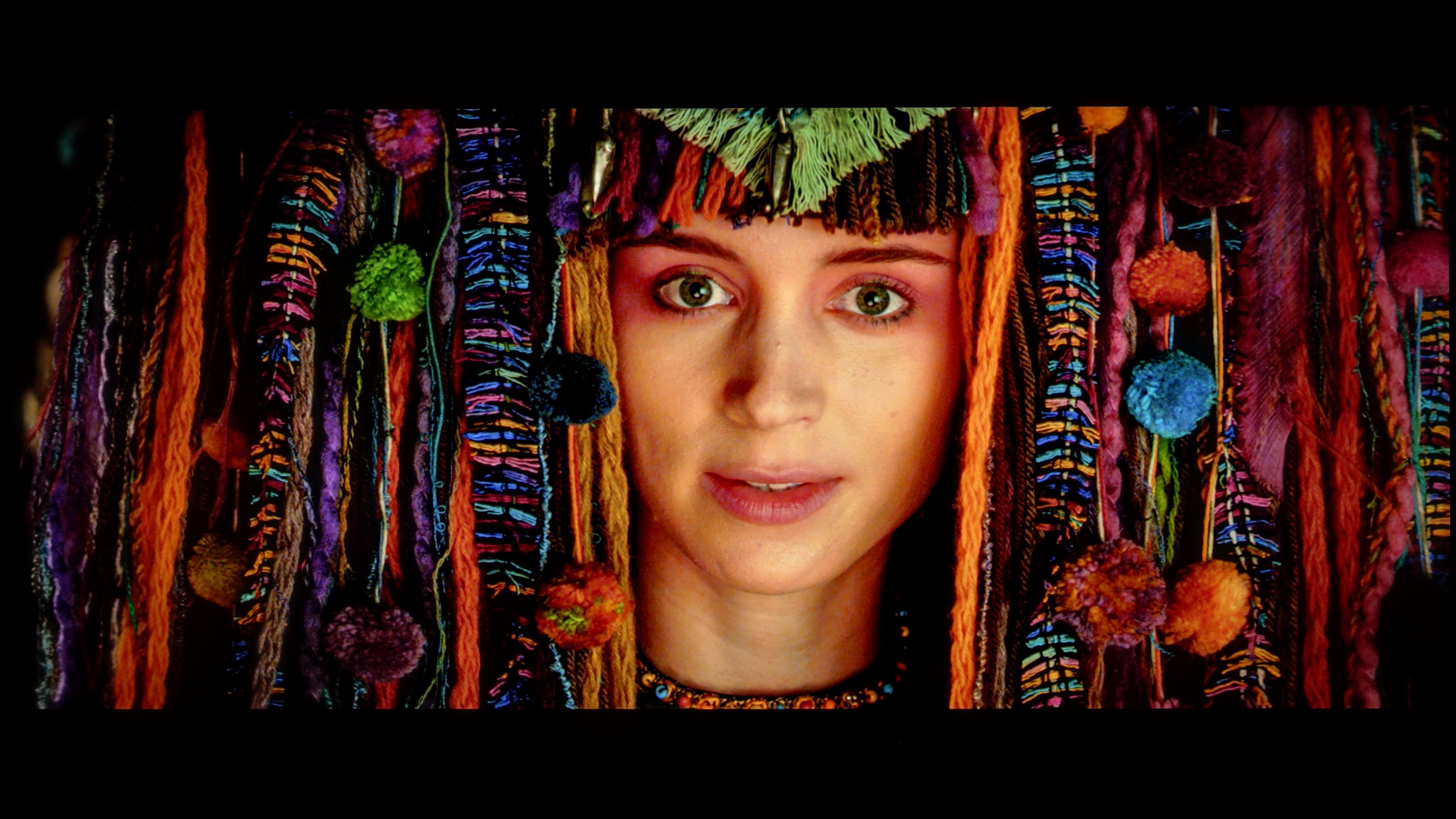
The calibration process of the Sony Bravia 8 television resulted in significant improvements in image quality. The white balance was notably enhanced for both SDR and 4K HDR content, with minimal errors in the middle section of the graph. Gamma calibration was one of the biggest improvements, eliminating previous dips that had impacted brightness stability and the reproduction of detail in dark areas. The EOTF curve was also corrected, making bright elements appear more natural and improving the overall tonal balance.
However, the most attention should be given to colour reproduction, where some issues persist despite calibration. Sony has omitted the CMS system in this model, which would allow for more precise colour control. As a result, the Colour Checker test for 4K content still reveals significant colour inaccuracies. Despite these limitations, calibration is still recommended, as the improvements in brightness and contrast are noticeable and greatly enhance the overall image quality.
Thanks to the vast number of settings in the menu, we managed to bring the S85F almost to perfection. White balance in SDR content? Literally perfect – deviations do not exceed a value of "1". Thus, it can be confidently said that in materials with not very high dynamics, we have an image close to reference.
In HDR content, minor issues did arise, but they are of little significance in practice – most errors fall below the threshold of perception, which is a value of "3". We also managed to tame the S85F regarding brightness management – the EOTF curve, even in films, adheres to an almost perfect line. This is one of those cases where after calibration, you can comfortably forget about the settings and simply enjoy movies and series at the highest level.
Smoothness of tonal transitions
5/10
7.9/10

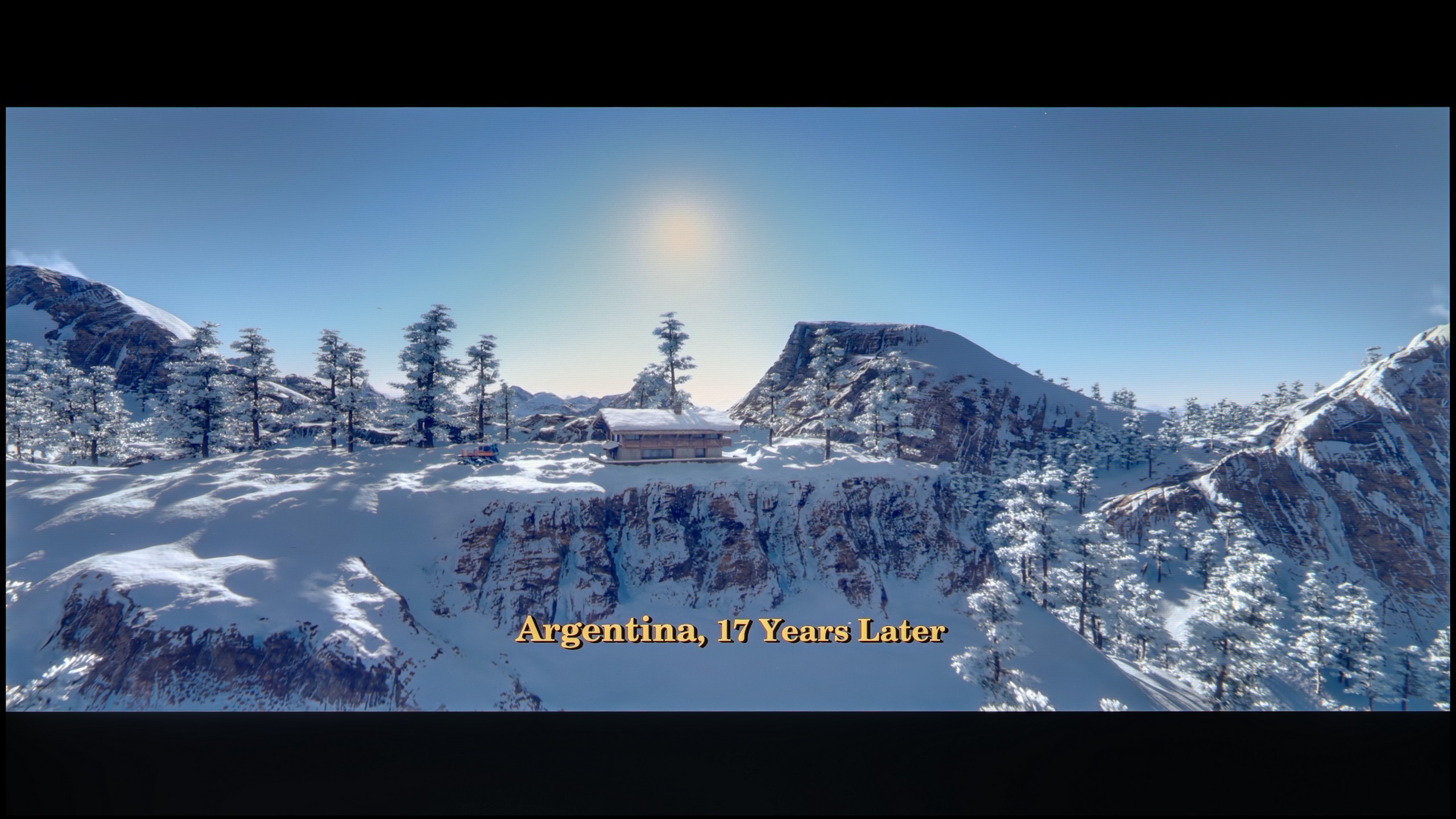



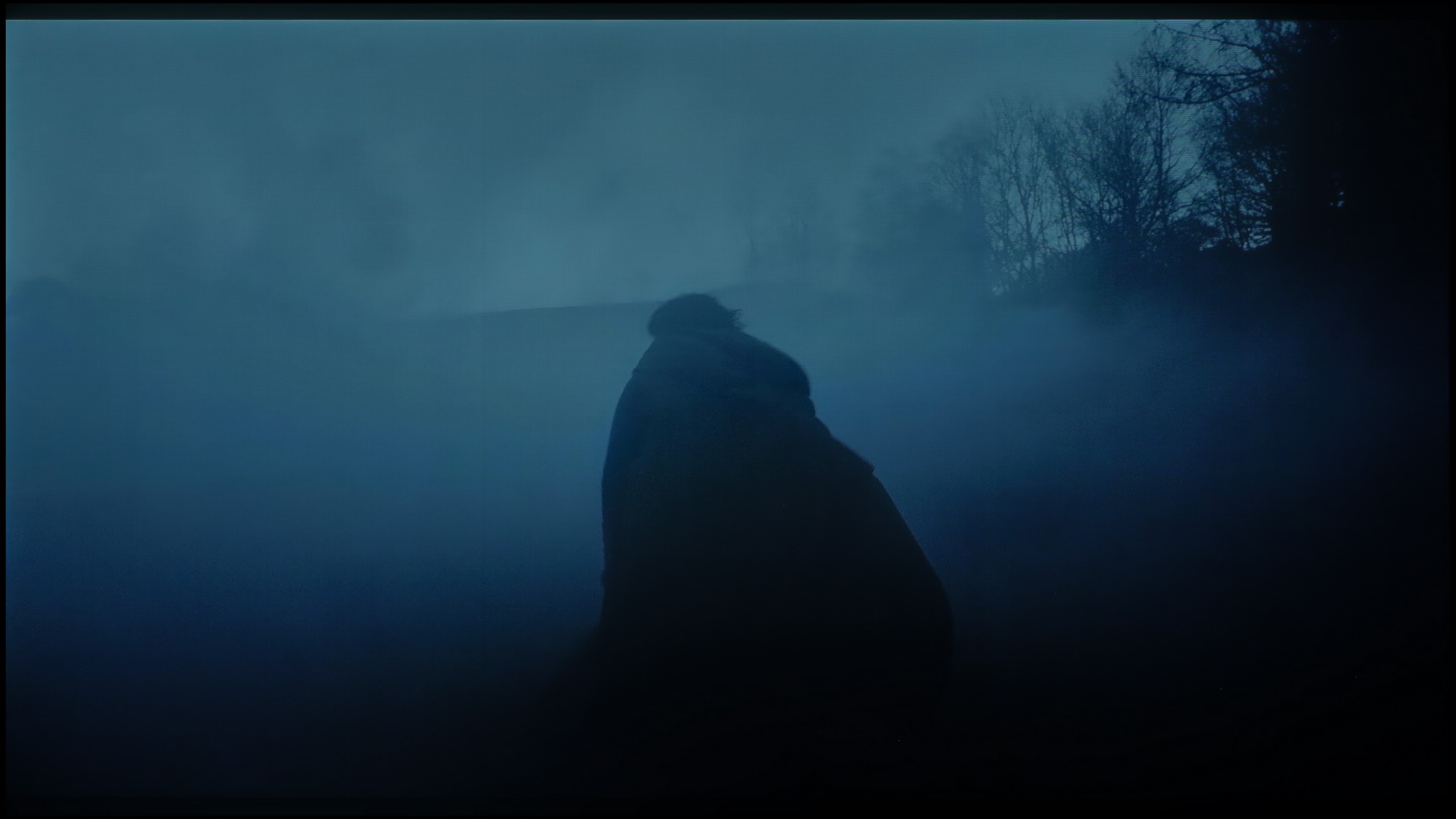

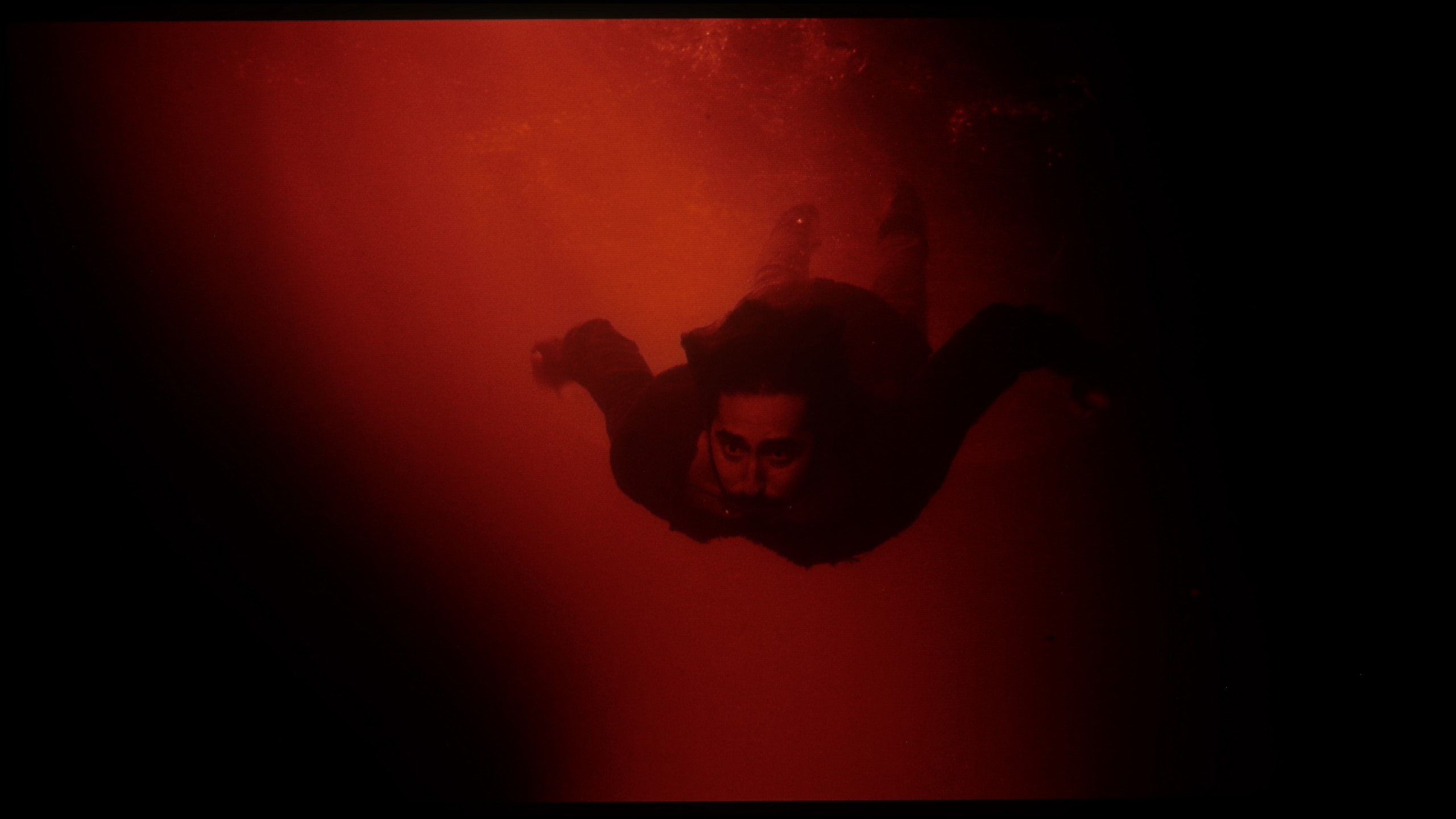




In 4K materials, the gradation is notably poor and disappointing. Visible seams are apparent in dark and light colours, detracting from the image quality and diminishing the overall viewing experience of high-resolution content. This is a notable weakness, as Sony's processors have typically excelled in this area, but it appears to be a failure this time.
Thanks to the QD-OLED panel, the color blending on the S85F performs really well. It's especially worth noting how it handles the darkest, most demanding scenes – where most televisions start to struggle, this model works almost perfectly.
Interestingly, a minor stumble can be noticed in those easier, brighter shots. There is a slight banding of colors, but it's so subtle that it's hard to believe it would actually bother anyone while watching.
Image scaling and smoothness of tonal transitions
6.1/10
7/10
Smooth transition function

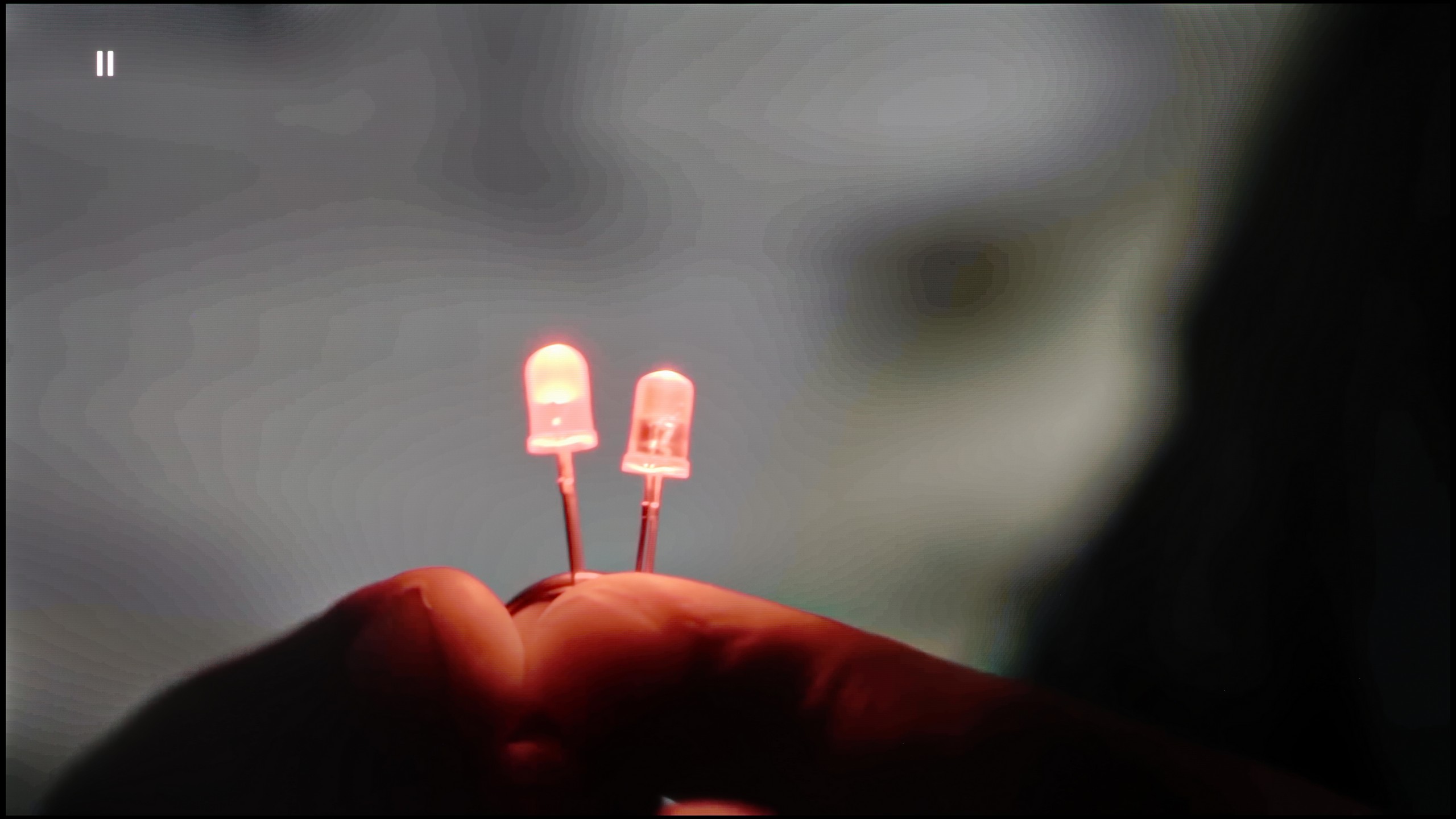
Image without overscan on the SD signal

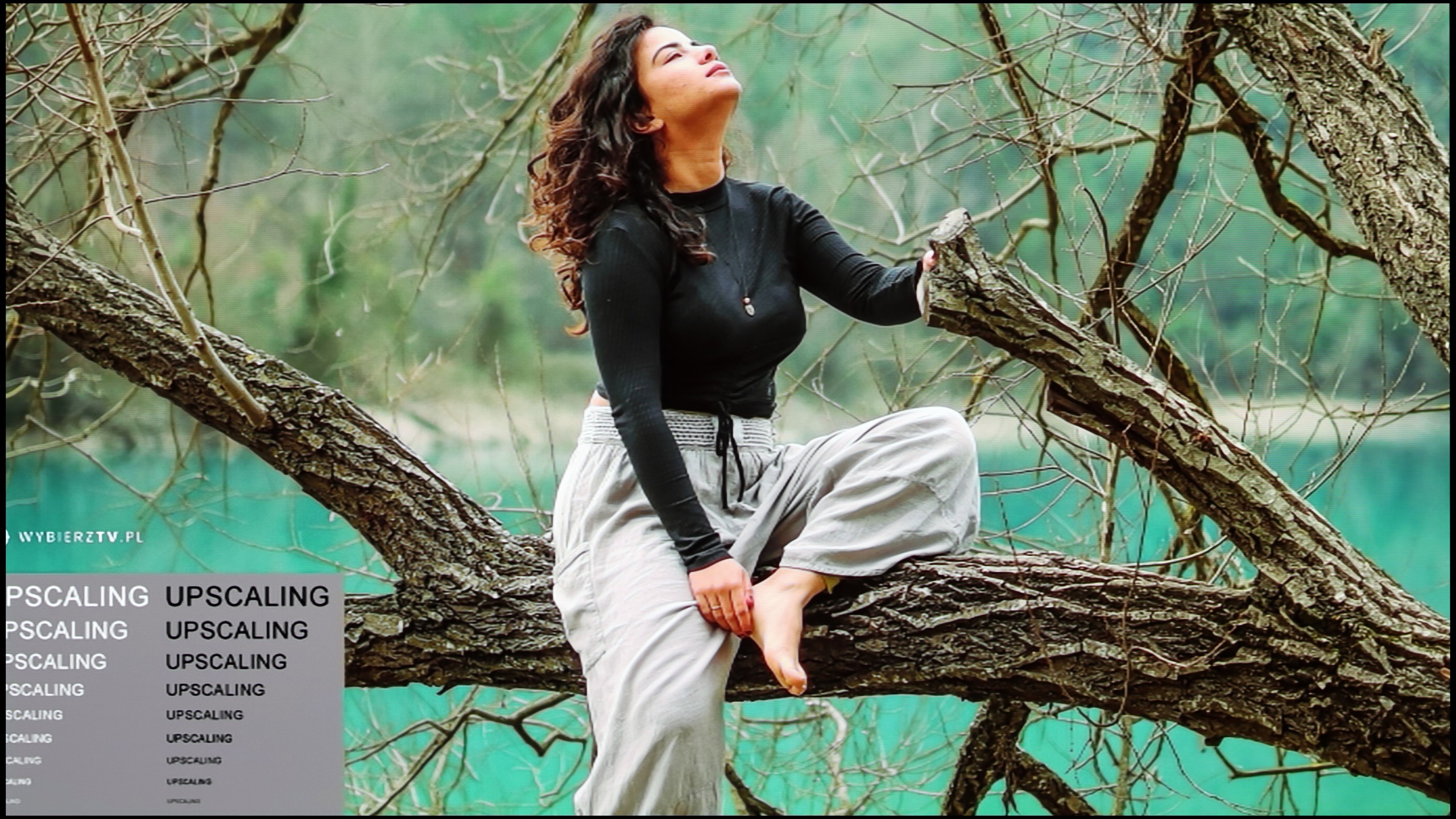
The fluidity of tonal transitions in lower-quality materials on the Bravia 8 is lacking. Unfortunately, the gentle gradation function, which was available in previous models, is missing, which is a significant drawback. The digital noise reduction feature can improve tonal transitions, but it often removes fine details, such as clouds in scenes from The Martian, which may not be to everyone's taste. On the other hand, the digital processing in the Sony XR80 is quite effective. In test scenes, it performed well without noticeable flaws, and the branches in the background remained smooth without jagged edges. This indicates that the Bravia 8 is capable of handling complex low-resolution image details with relative ease.
The tone transition smoothing feature in the S85F works really well – it can completely eliminate the problem of visible bands in very poor quality materials, even from YouTube. Unfortunately, even the lowest level of this option comes with compromises. Noise reduction is aggressive enough that it can smooth out film grain, which many of us consider an element of the cinematic atmosphere. At the "Standard" level, we did not notice that this feature removed anything significant from the image, so we can recommend this setting. On the other hand, the "High" level is a different story – it can smooth not only noise but also fine, desirable details such as the texture of objects.
When it comes to image scaling, the S85F performs very well. The material looks sharp, and the only minor imperfection is slightly visible contour jaggedness. And there’s the ongoing issue with Samsung televisions – overscan. This can cause some scenes to have their frames slightly trimmed, which is worth keeping in mind when watching very old content.
Blur and motion smoothness
8.5/10
8.5/10

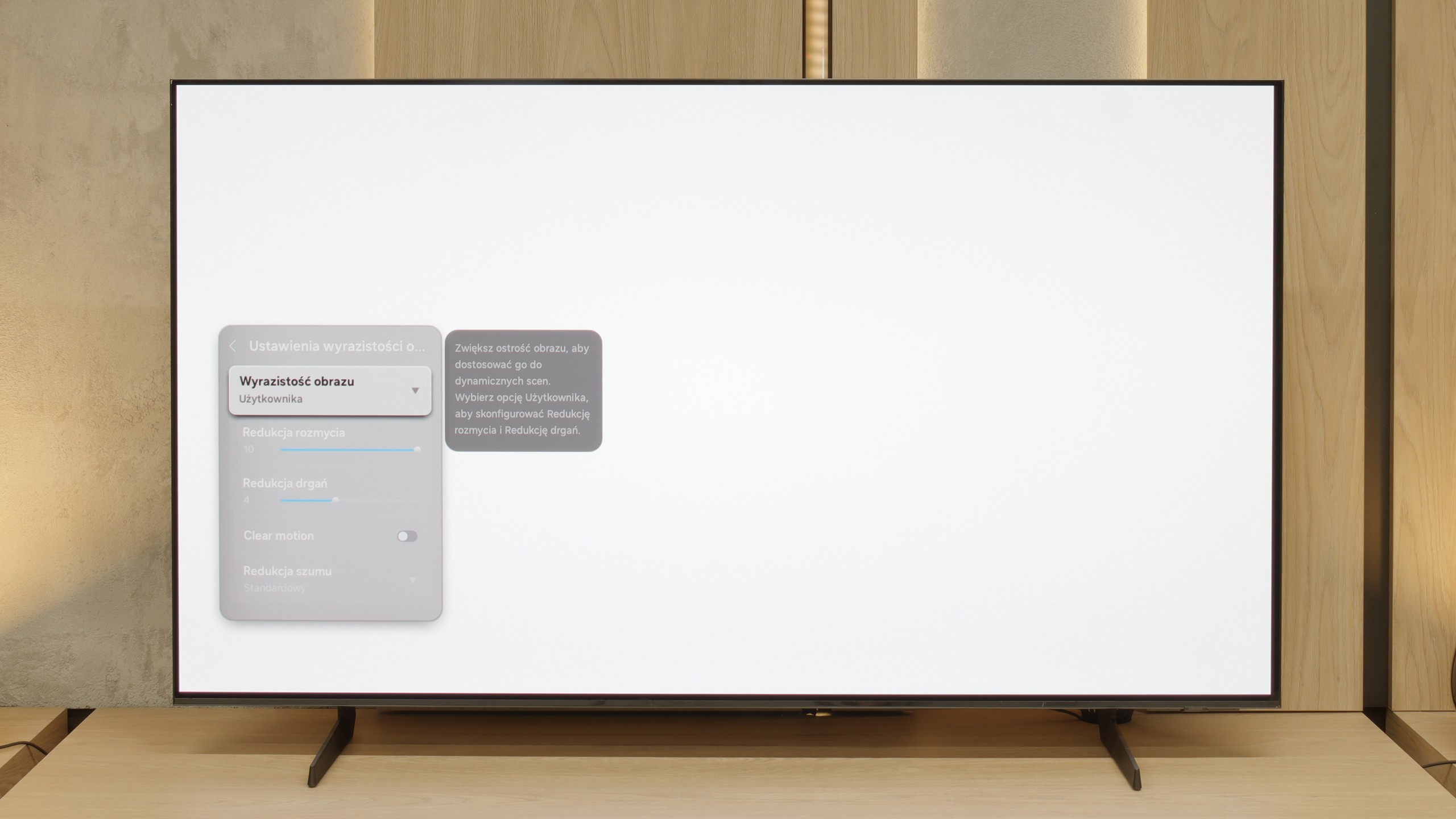
Blur (native resolution, maximum refresh rate):



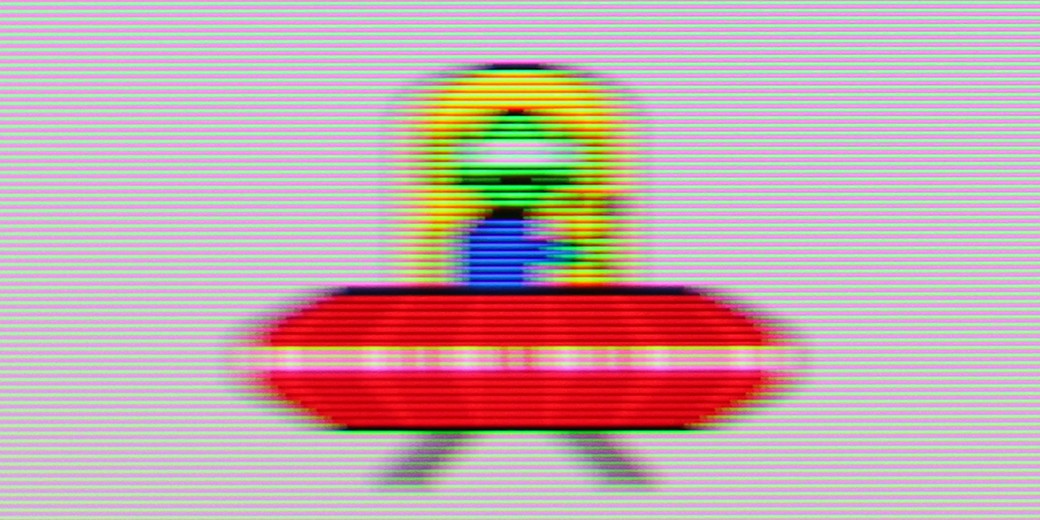
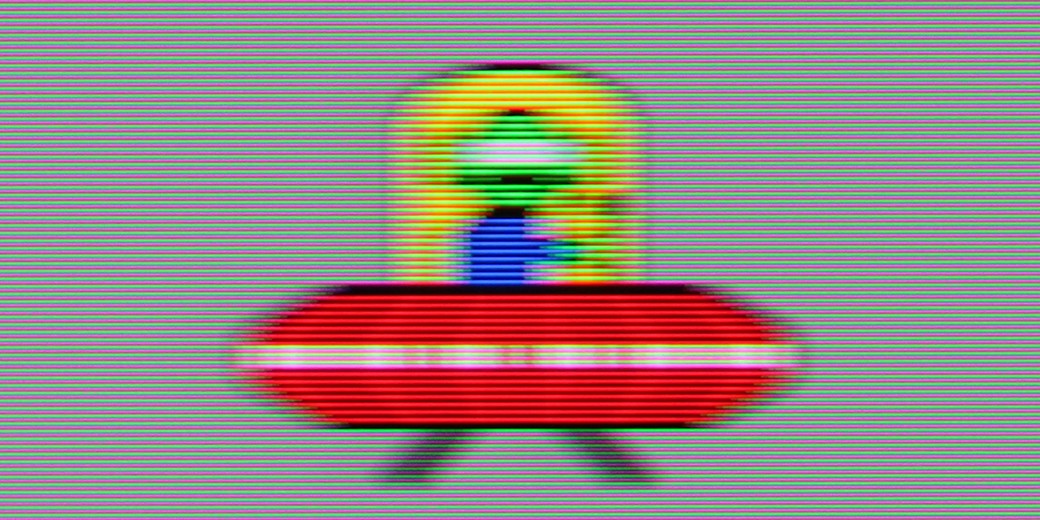
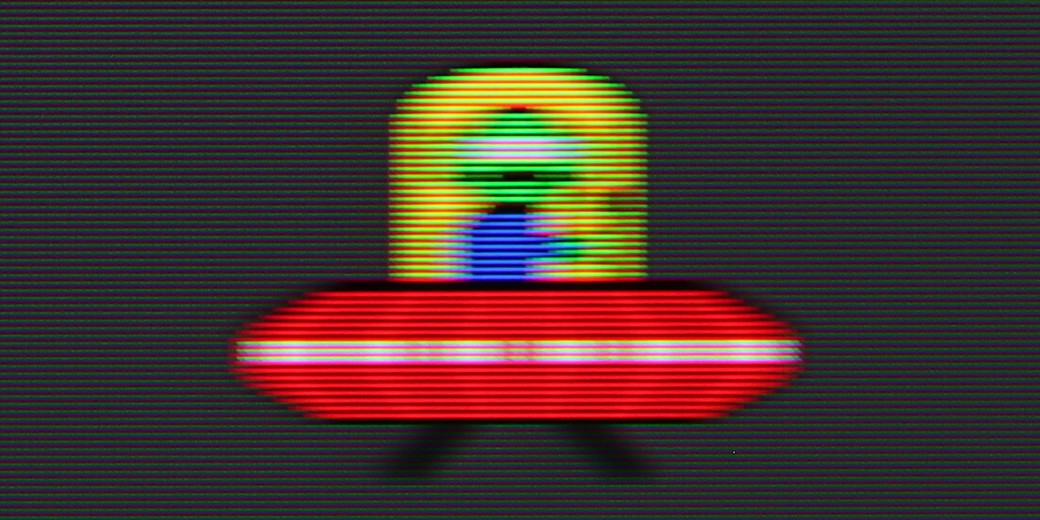
Blur (BFI function enabled):
Image flickers in this mode



Image flickers in this mode
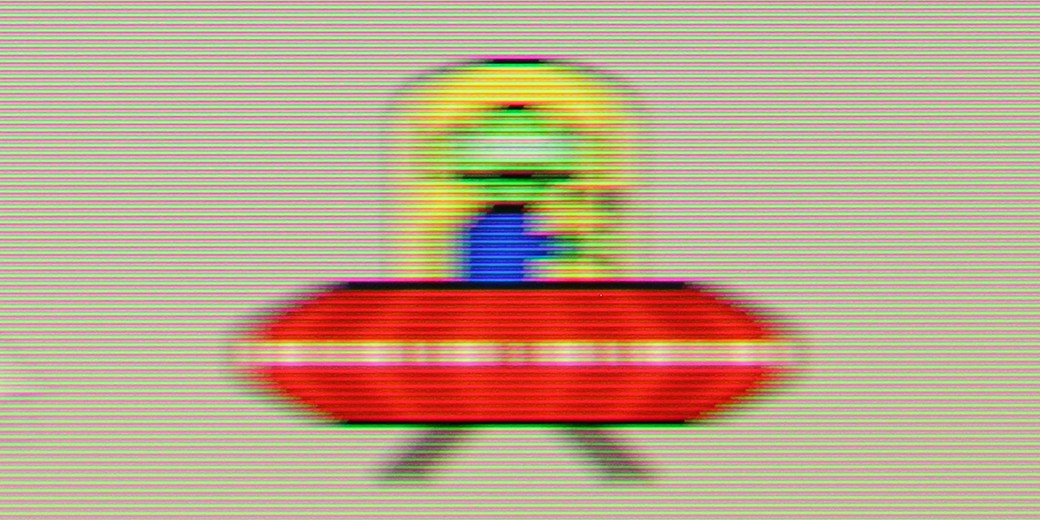
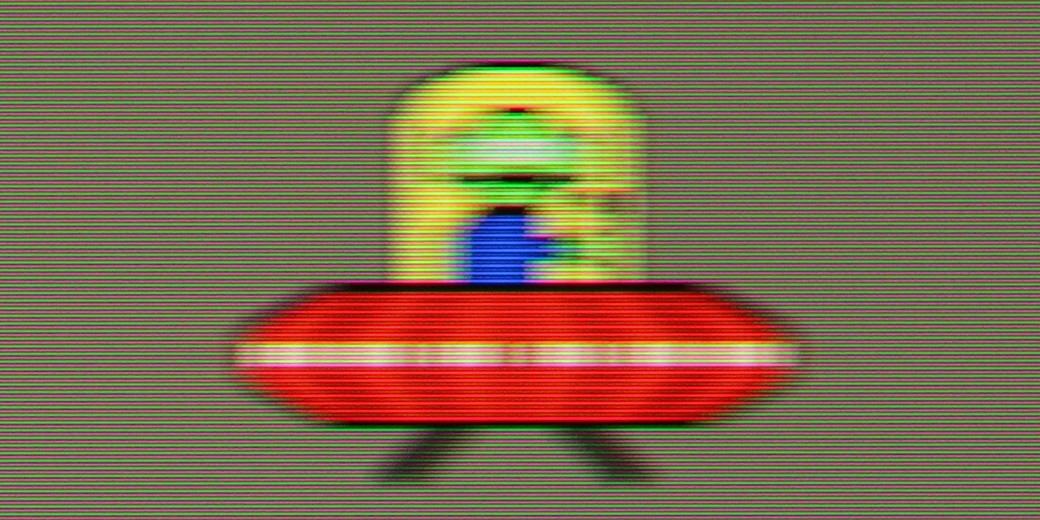
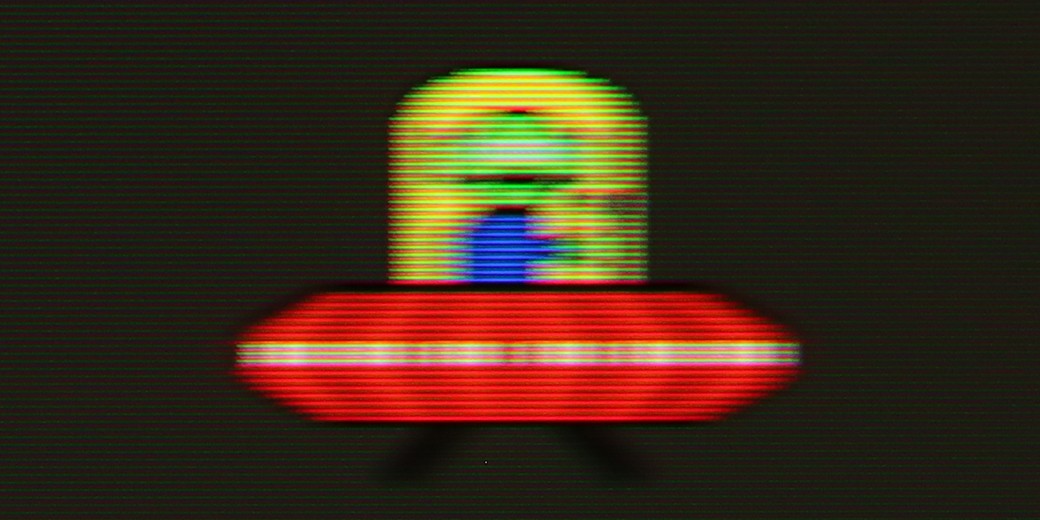
Smużenie ():
Smużenie (4K@60Hz Game Motion Plus):
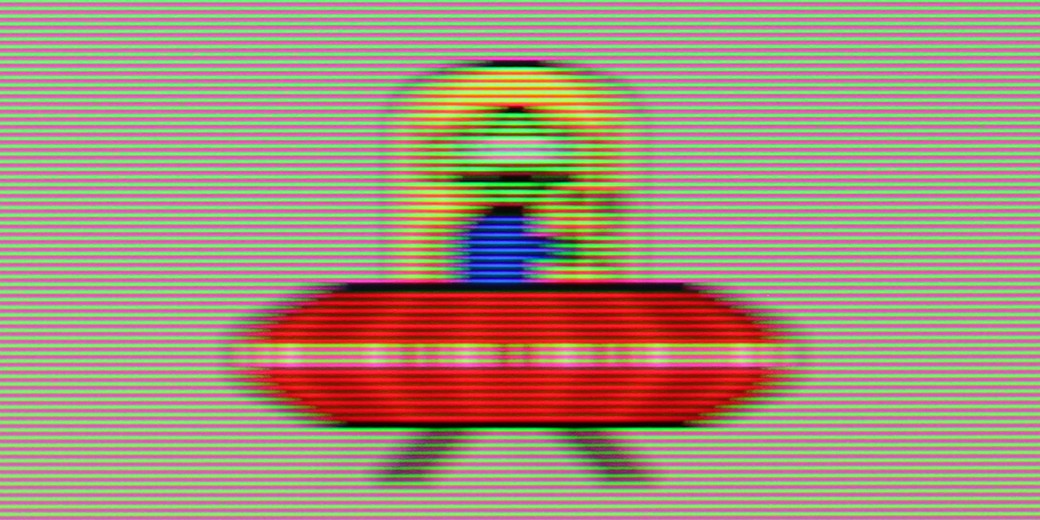
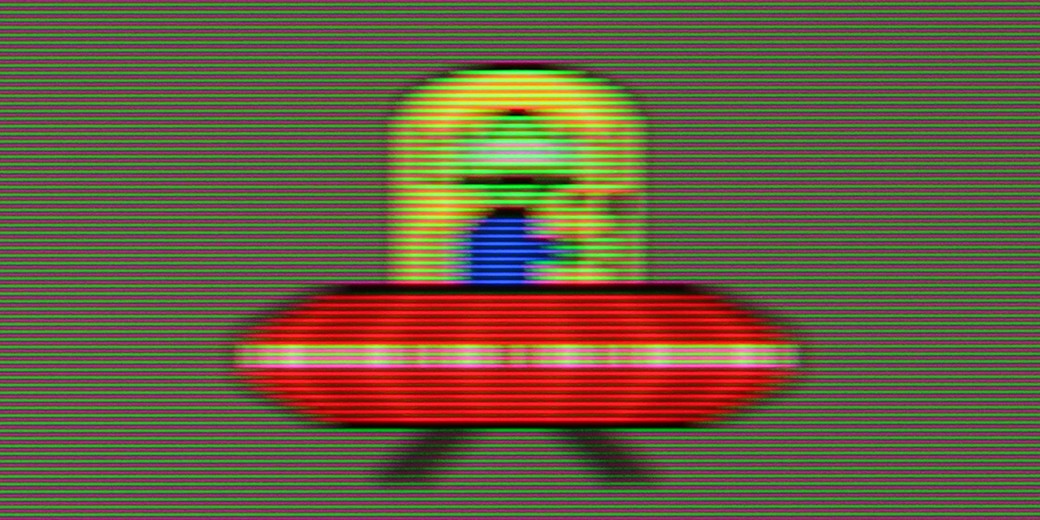
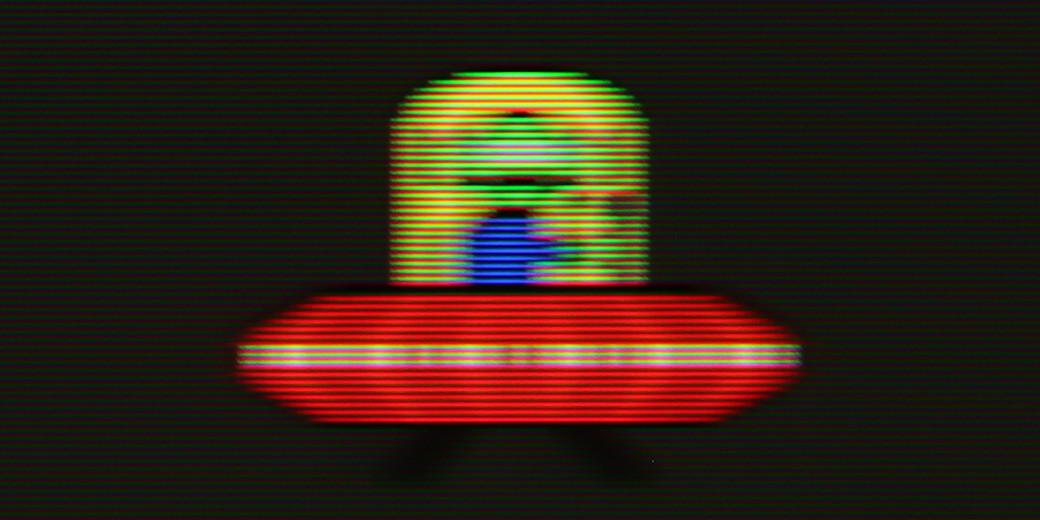
The Sony Bravia 8 offers a maximum refresh rate of 120 Hz, ensuring smooth viewing of dynamic content such as sports and games, with sharp and fluid motion. For more demanding users, the Sony XR80 features an advanced motion smoothing system, divided into three settings: Smoothness (Film), Smoothness (Camera), and Clarity. The first two settings adjust the level of blur and smoothness, while the Clarity setting will be discussed in more detail below. Each of these parameters can be customised to suit individual preferences, allowing users to fine-tune the settings for the optimal viewing experience.
S85F is a hellishly fast television – and this is not just an empty catchphrase for effect. Thanks to the 120 Hz OLED panel, dynamic scenes, whether in games or while watching a live match, look exactly as they should – smoothly, sharply, and without the feeling that something is "escaping" from the frame. The lightning-fast pixel response time, typical of OLEDs, plays a crucial role here. Transitions between frames are practically instantaneous, and the image remains clear even during the fastest camera movements. A ball flying across half the field? A car racing in a chase scene? Everything here is clear and free of the characteristic "trail" found in LCDs.
This is exactly what we expect from a good OLED – zero compromises in motion fluidity. The S85F gives the feeling that regardless of the pace of the action, we can focus on what is happening on the screen, rather than on the imperfections of the image.
Console compatibility and gaming features
8.1/10
8.2/10
- ALLM
- VRR
- VRR range48 - 120Hz48 - 120Hz
- Dolby Vision Game Mode
- Correct implementation of HGIG
- 1080p@120Hz
- 1440p@120Hz
- 4K@120Hz
- Game bar

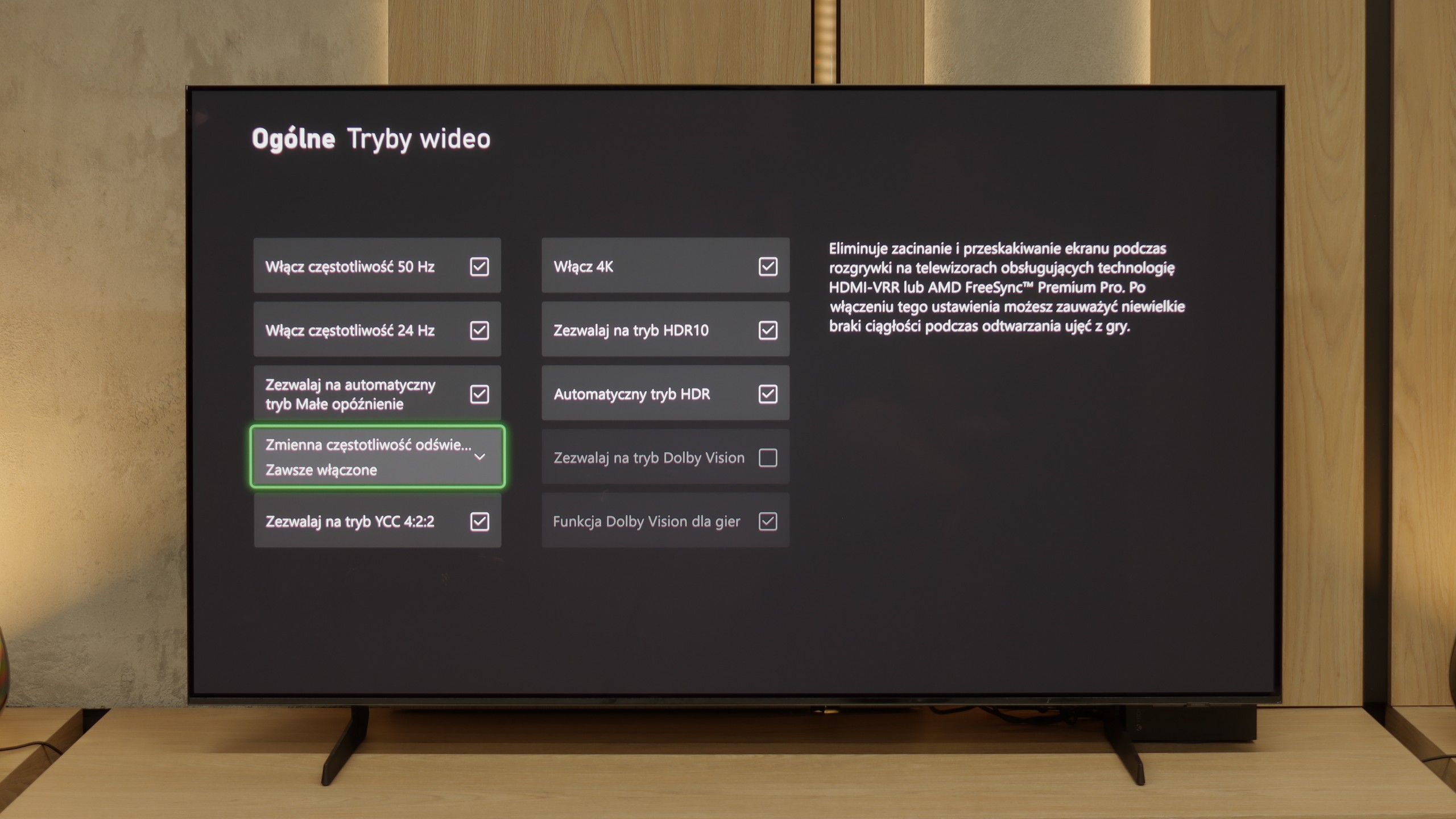

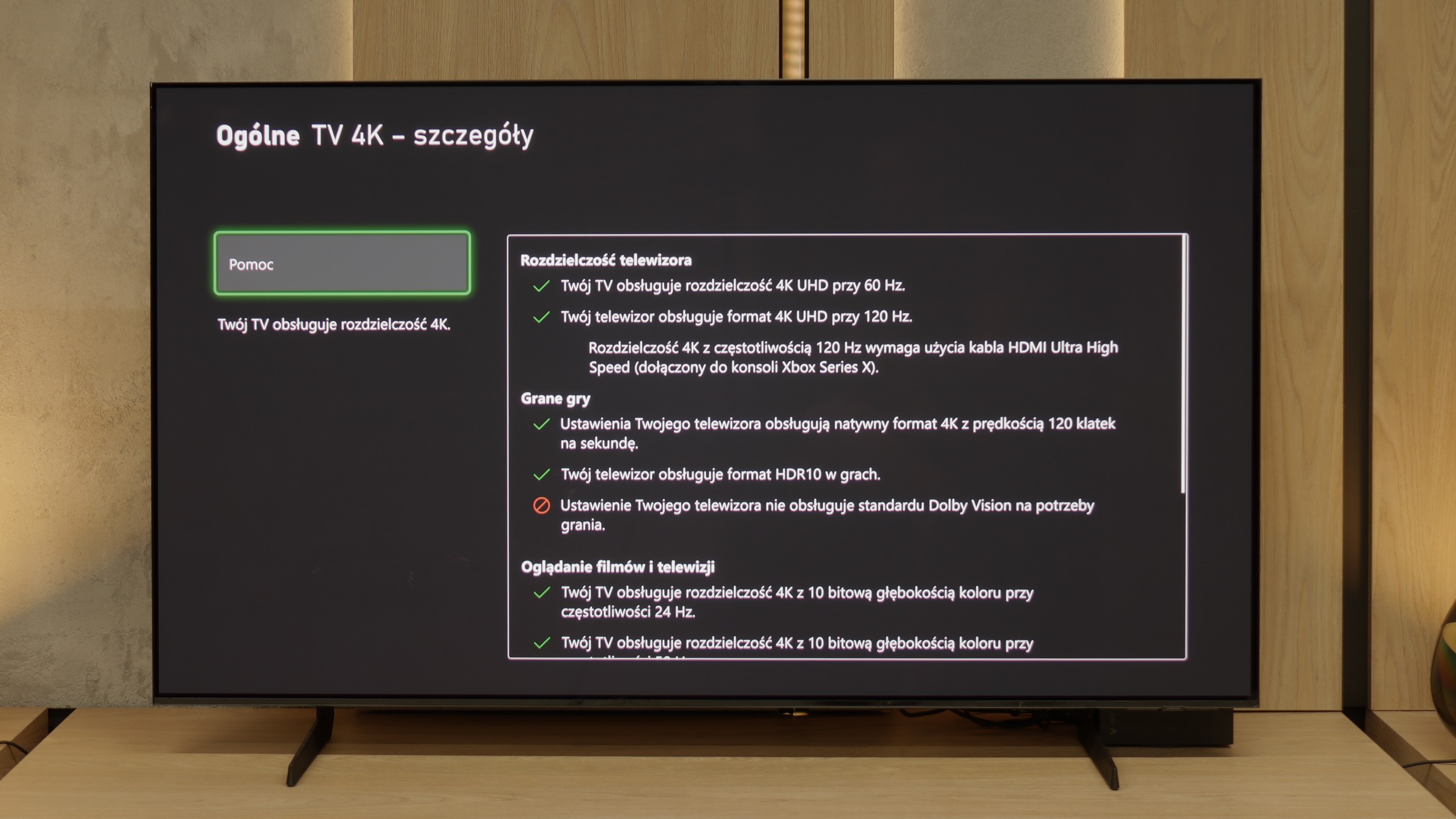

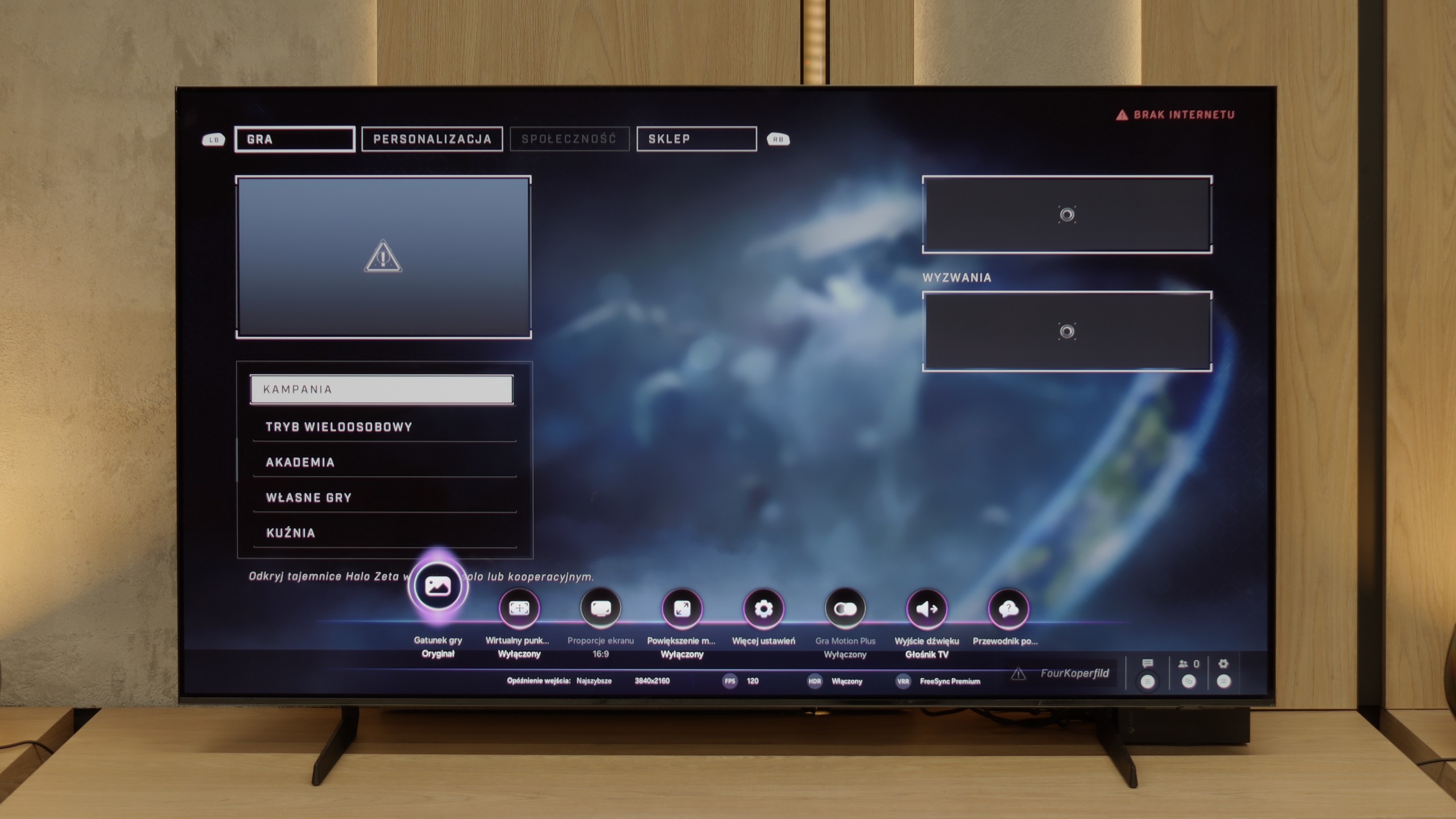

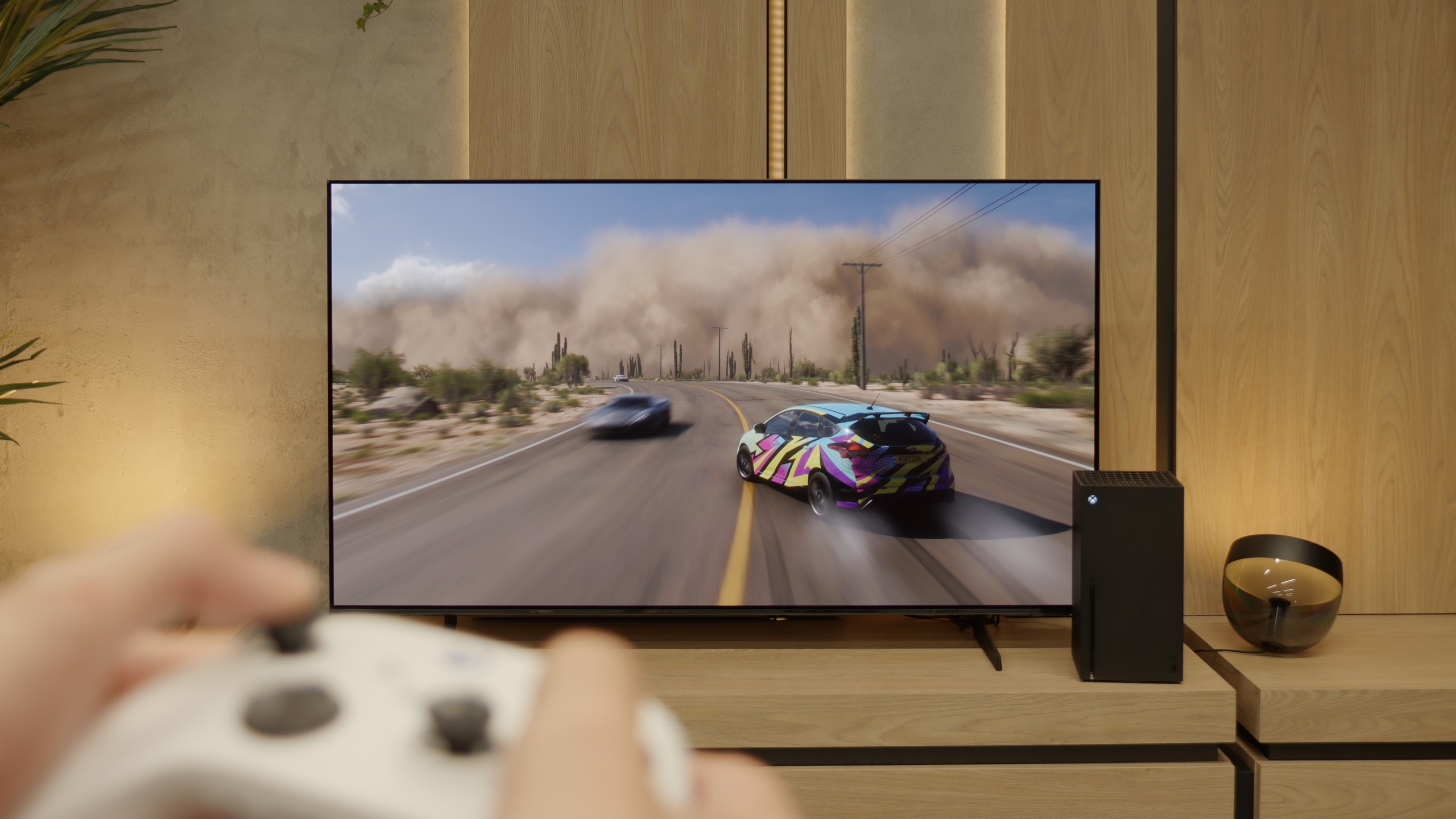
The Sony Bravia 8 has greatly improved its compatibility with consoles compared to earlier models. It supports variable refresh rate (VRR), which eliminates screen tearing and can sync with graphics cards for smooth visuals. The Auto Low Latency Mode (ALLM) reduces input lag, a crucial feature for fast-paced games. Additionally, Dolby Vision with low latency enhances HDR effects, offering stunning visuals during gameplay.
The Sony XR80 also includes a Game Bar, which provides quick access to settings and monitoring tools during gaming. A notable feature is the option to enable a virtual crosshair on the screen, giving players a potential advantage in shooter games.
However, there are some drawbacks. The TV lacks support for 1440p@120Hz resolution, which would benefit users with less powerful graphics cards. Furthermore, the Sony XR80 has only two HDMI 2.1 ports, one of which is typically used for connecting an audio system via eARC, limiting the number of available ports for next-gen consoles.
The S85F has practically everything it needs to become the dream screen for gaming. Four fully-fledged HDMI 2.1 ports with a bandwidth of 48 Gb/s, support for VRR, ALLM, a super-detailed Game Bar that clearly shows all parameters – and on top of that, a gem in the form of Game Motion Plus. This is a motion interpolator that makes animation in games more enjoyable, with only a slight increase in input lag. This is a rare combination, and Samsung deserves a big plus for it.
Now comes the moment where we have to complain a bit. The lack of Dolby Vision in Samsung TVs is already standard, so there's no point in hoping (unless something changes in a few years) – but the disappearance of HGiG after the software update is something that’s hard to explain. HGiG (which stands for HDR Gaming Interest Group) is a mode that allows for precise reproduction of brightness in HDR games, according to the creators' intention. Without it, HDR calibration on the console becomes less precise, so we might end up with an image that's too dark in the shadows or overly bright.
Perhaps Samsung will fix this in the next update – and we have high hopes for that. Because if HGiG returns, the S85F will become almost the perfect TV for gamers.
Input lag
10/10
10/10
SDR
HDR
Dolby Vision
The low input lag on the Sony Bravia 8 is certainly a standout feature, with a remarkable 13 ms providing exceptional responsiveness. The Dolby Vision mode also deserves praise, as it performs exceptionally well on this model. Unlike many other manufacturers, where Dolby Vision often underperforms, it delivers its full potential here, enhancing the gaming experience.
Here, dear gamers, the S85F shows its claws. 5 ms with 120 Hz content and about 10 ms with 60 Hz are results that can be described in one word in the world of televisions – phenomenal. This means that the response to our movements is practically instantaneous. We press the button, and the action on the screen happens without any delay, as if the television were reading our minds. In dynamic games, where a fraction of a second can determine victory or defeat, such values make a huge difference. There is no question of a nervous "wait" for the image to catch up with our movements. The S85F gives us the feeling that everything is under our complete control – and that's how it should be with equipment that aspires to be the ideal screen for gamers.
Compatibility with PC
7.6/10
7.6/10

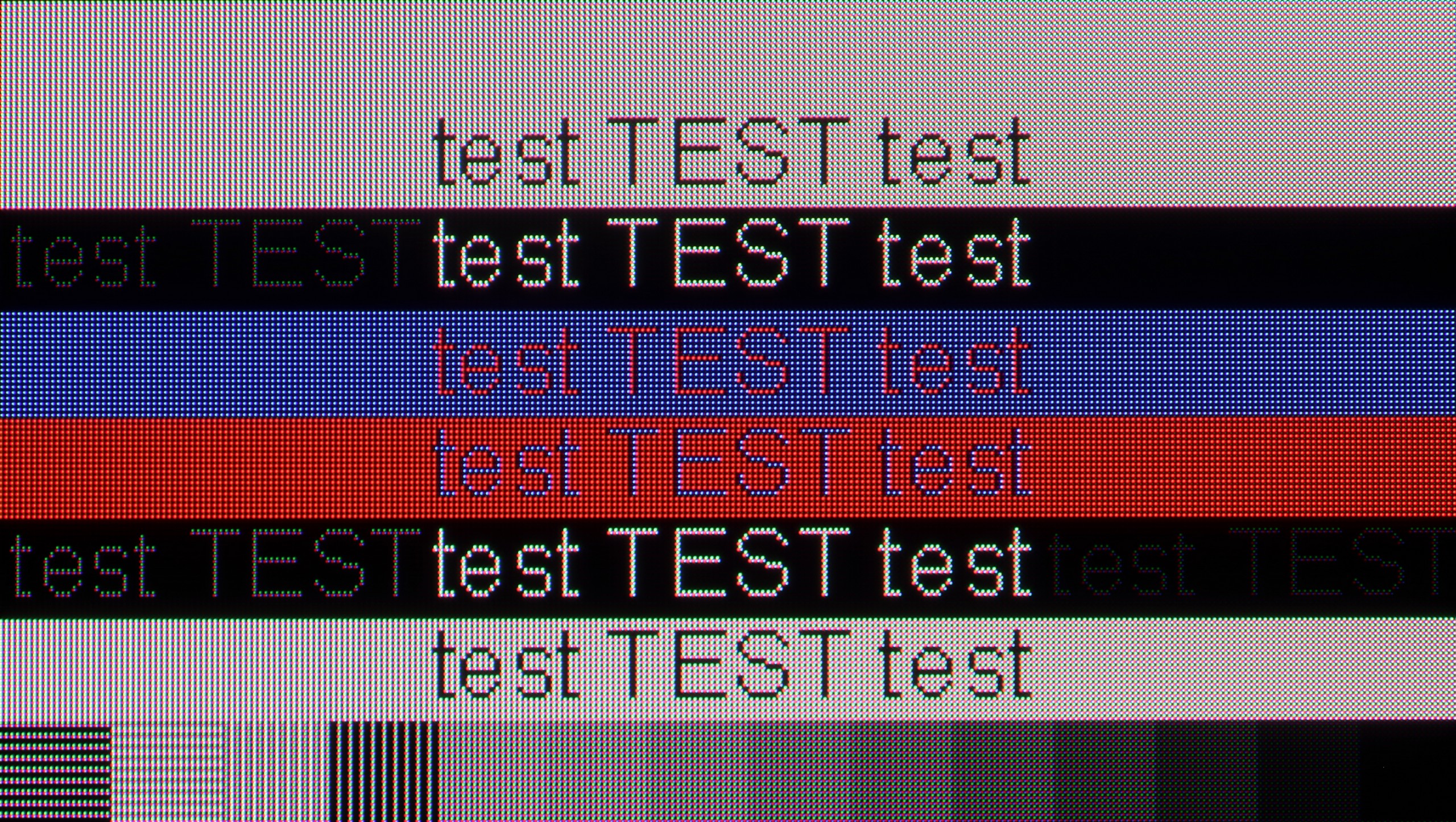
The Sony Bravia 8 works very well with computers, much like most WOLED matrix televisions. Font readability is excellent, making it comfortable to work with documents or browse websites. The impressive 5 ms input lag ensures excellent responsiveness during gameplay. The only downside is that fonts on a dark background appear slightly dimmed.
If you plan to connect the S85F to a computer, we have good news – this television is perfect for that. Low input lag and a 120 Hz panel make gaming on a PC pure pleasure. Whether we're talking about dynamic shooters or calmer RPGs, the response is instantaneous, and the fluidity of animations can keep you engaged for hours.
Of course, there’s no rose without thorns. Due to the diamond pixel arrangement in the QD-OLED panel, there is a slight “rainbow icon” effect, particularly noticeable when sitting close to the screen. Fortunately, this is more of a detail that most of you won’t mind in everyday use. Especially since, thanks to the proper implementation of chroma 4:4:4, the readability of fonts is at a very good level – documents, websites, and text editors look just as they should.
Viewing angles
7.3/10
9.8/10
The viewing angles on the Sony Bravia 8 are excellent, as expected from an OLED TV. The image retains its colours and contrasts even when viewed from wide angles. The only models that outperform it in this area are those equipped with MLA (Meta-Lens Array) technology and QD-OLED, which provide even wider viewing angles and superior image quality at extreme angles.
Here, dear readers, the S85F reaches absolute heights. The viewing angles are phenomenal – some of the best you can get in a television today, thanks to the unique QD-OLED panel from Samsung Display. Of course, WOLED panels can also maintain a high standard in this regard, but let's not kid ourselves – what QD-OLED shows in the S85F is even more impressive. Colors, contrast, and brightness remain practically unchanged even when watching the screen from a very large angle. This is the kind of television where you don't have to fight for the "best spot on the couch" – everyone will see the picture in all its glory, no matter where they sit.
TV efficiency during daytime
5.6/10
5.1/10

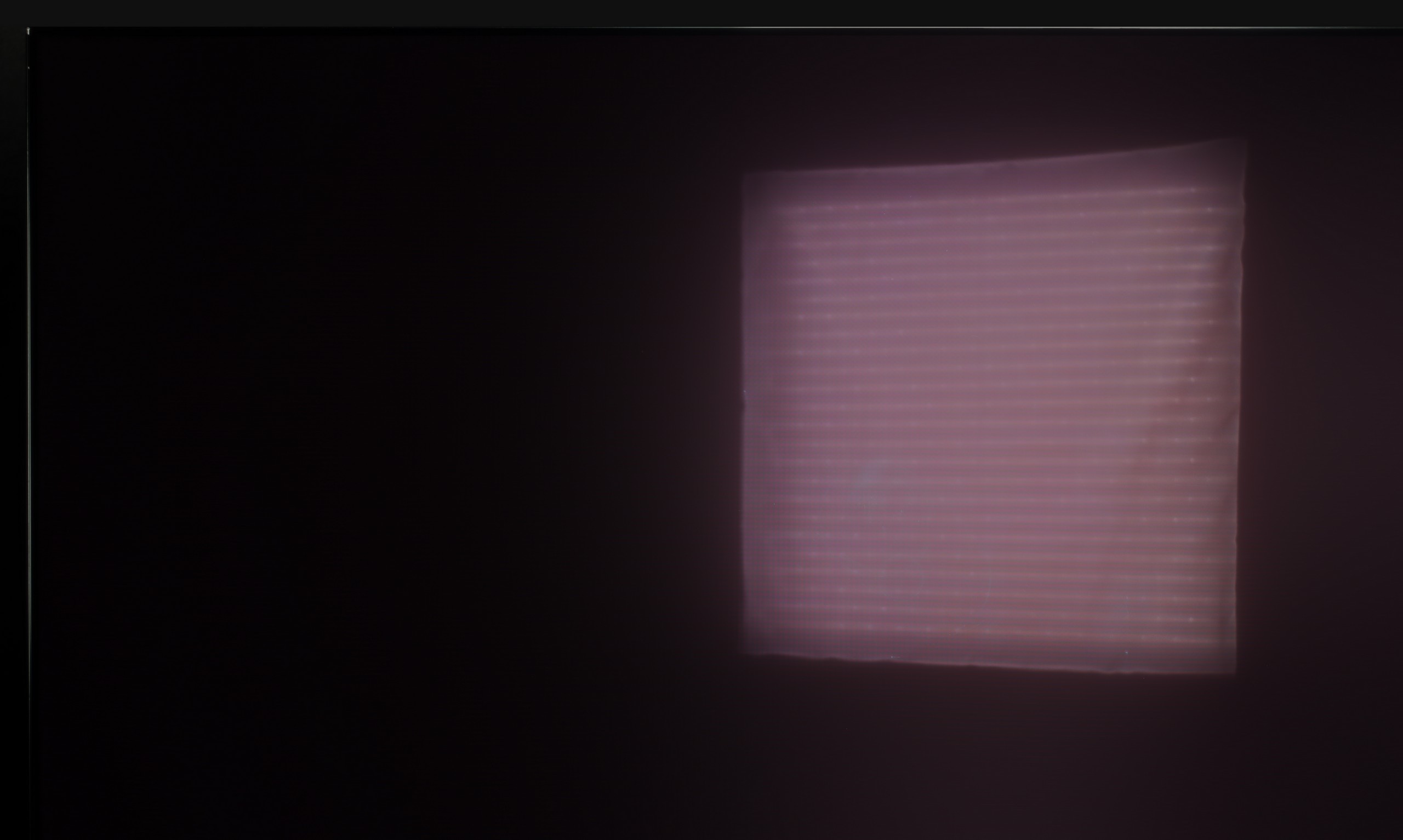

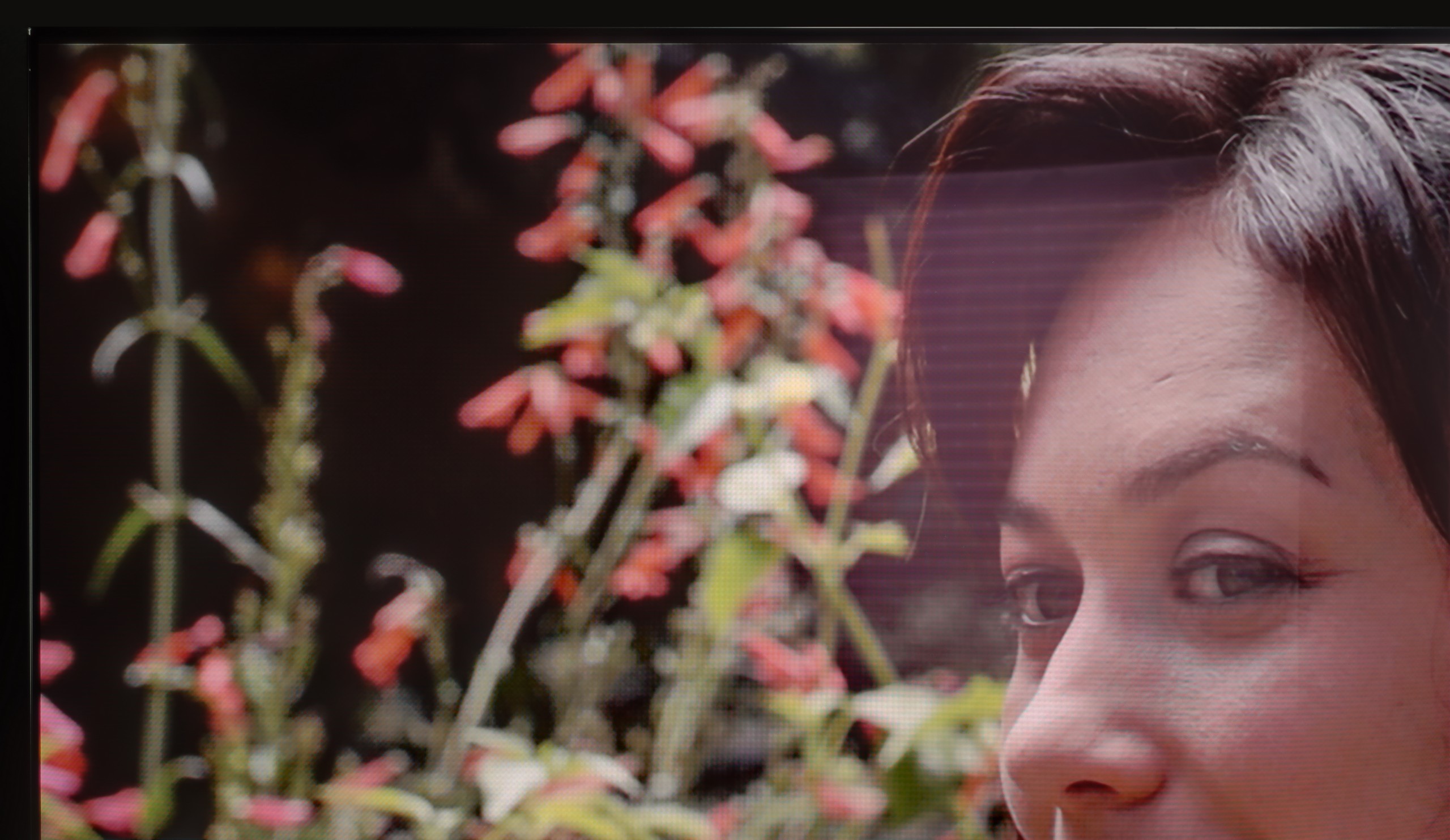
Matrix brightness
Average luminance SDR
Samsung OLED S85F (QD-OLED): 317 cd/m2
Sony Bravia 8 (XR80): 335 cd/m2
The glossy matrix on the Sony Bravia 8 effectively reduces reflections, although they take on a slightly bluish hue. However, the brightness level of 330 nits is not particularly impressive, making this TV better suited for evening viewing. During the day, to ensure optimal image quality, it's advisable to close the windows to minimise the impact of external light.
We really liked the saying "there's no rose without thorns," and it perfectly fits the QD-OLED TVs. Especially when we take a look at their performance in heavily sunlit conditions. As you may notice, in very bright light, the panel's surface can take on a slightly cherry hue. The effect is subtle in the case of the S85F, but in extreme lighting conditions, black can perform a bit worse than in WOLED panels. But - and this "but" is key here - QD-OLED significantly better suppresses direct reflections of light. This means that reflections will be less bothersome, and the image will maintain clarity even when something bright reflects off the screen. You gain some, you lose some.
When it comes to brightness, the S85F is a moderately bright OLED. It's not a model made for extremely sunlit living rooms. If you plan to place it in a very bright room, we recommend considering shades or positioning it in a place that provides at least some protection from direct light.
Details about the matrix
Subpixel Structure:

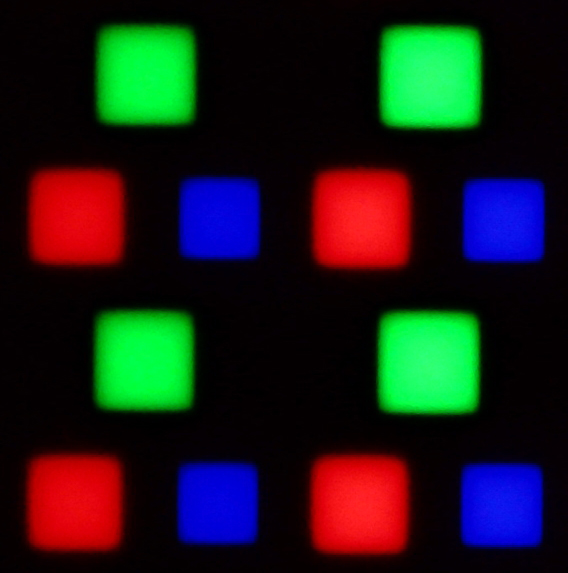
Panel uniformity and thermal imaging:

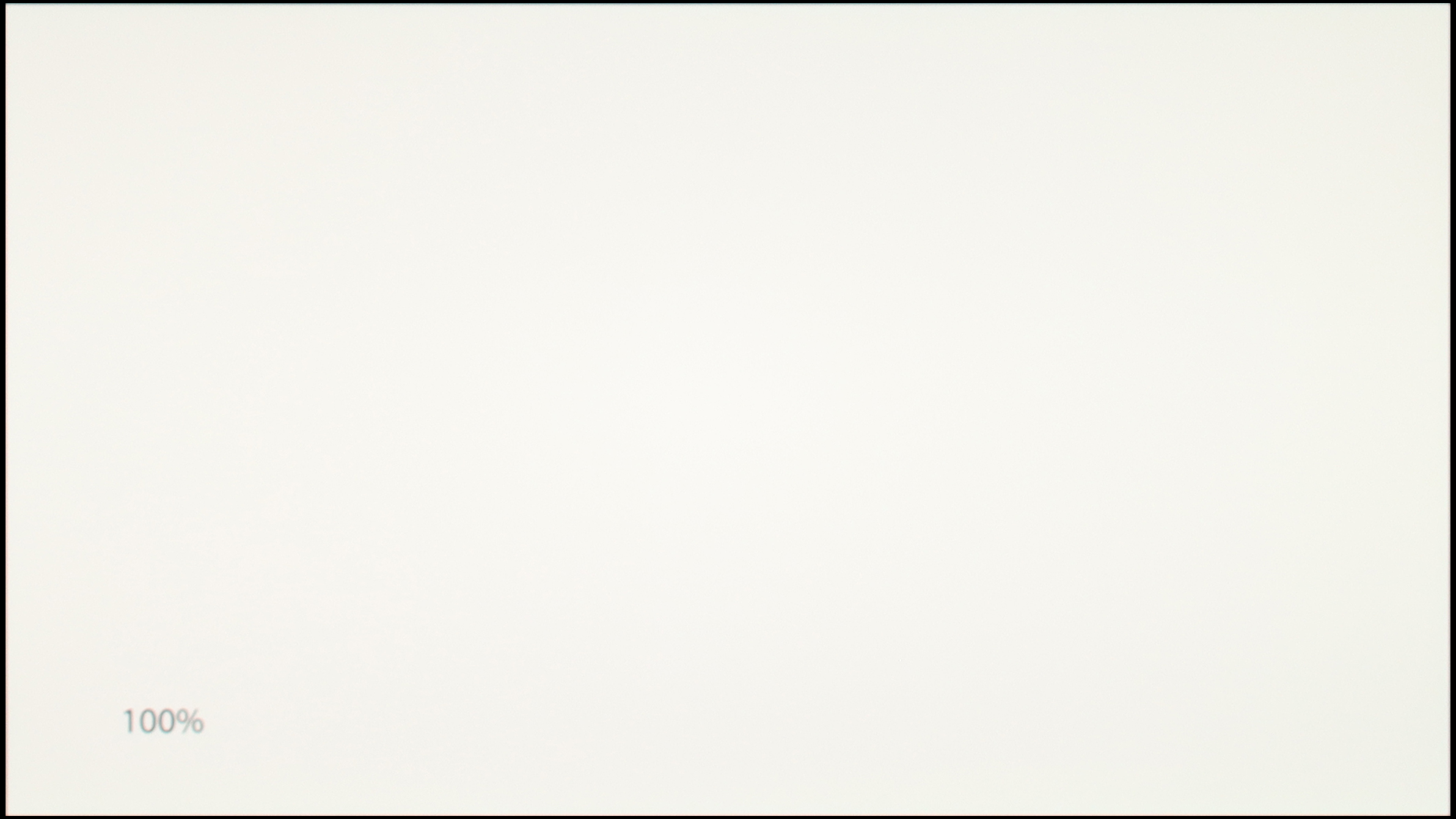
Sony Bravia 8 (XR80)
Samsung OLED S85F (QD-OLED)
TV features
9.4/10
7.3/10
- HDMI inputs2 x HDMI 2.0, 2 x HDMI 2.1 48Gbps0 x HDMI 2.0, 4 x HDMI 2.1 48Gbps
- Other inputsToslink (Optical audio)
- OutputsToslink (Optical audio), eARC (HDMI), ARC (HDMI)Toslink (Optical audio), eARC (HDMI), ARC (HDMI)
- Network InterfacesWi-Fi 2.4GHz, Wi-Fi 5GHz, Ethernet (LAN) 100MbpsWi-Fi 2.4GHz, Wi-Fi 5GHz, Ethernet (LAN) 100Mbps
- TV receptionDVB-T, DVB-T2, DVB-S, DVB-S2, DVB-CDVB-T, DVB-T2, DVB-S, DVB-S2, DVB-C
Classic features:
- Recording to USB (terrestrial TV)
- Recording programming
- Picture in Picture (PiP)
- RF remote control (no need to aim at the screen)
- Backlit remote control
- Teletext
- Audio only mode
- Bluetooth headphones support
- Simultaneous Bluetooth headphones & TV audio
Smart features:
- AirPlay
- Screen mirroring (Windows Miracast)
- Voice search
- Voice search in native language
- Ability to connect a keyboard and mouse


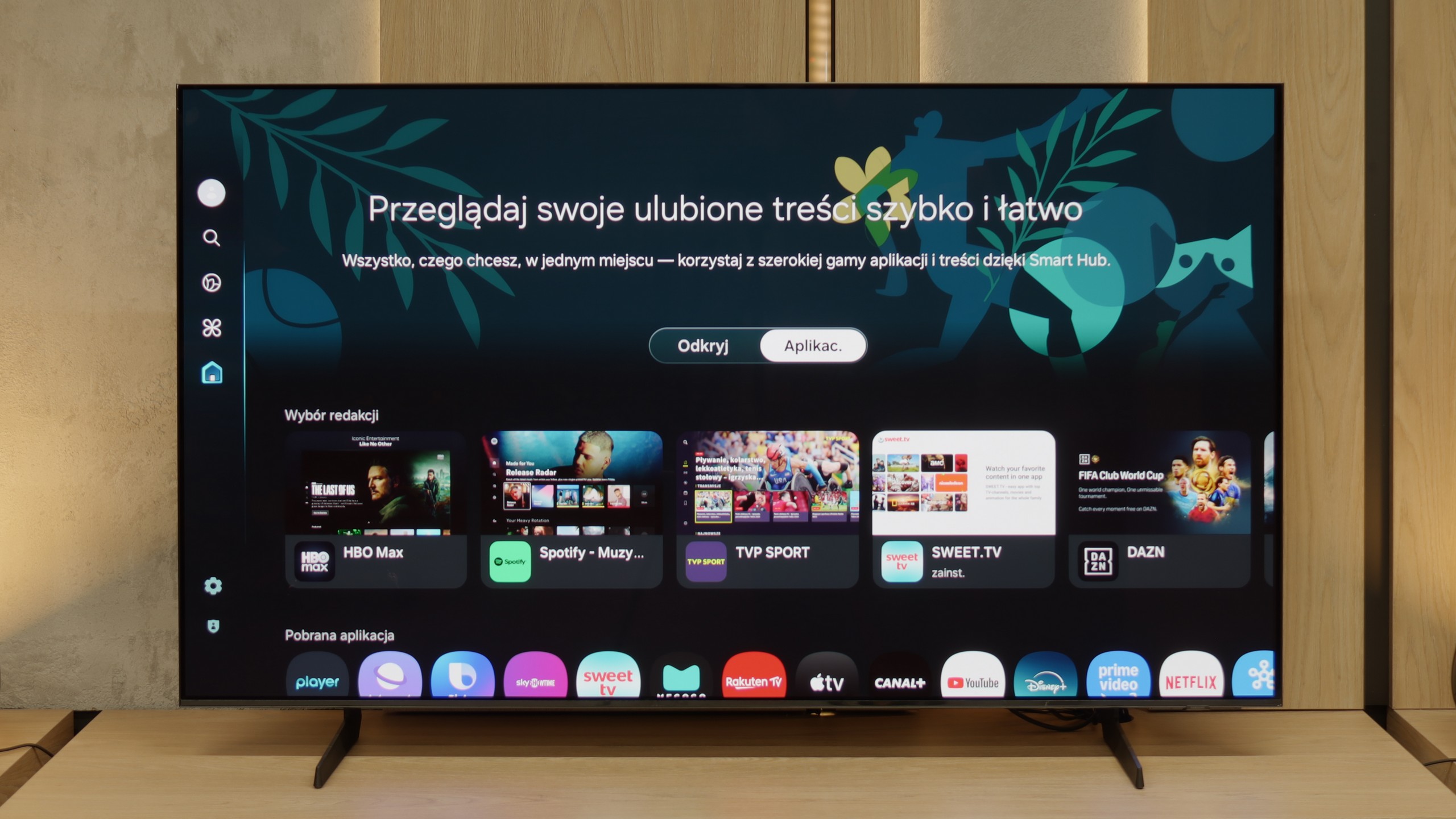
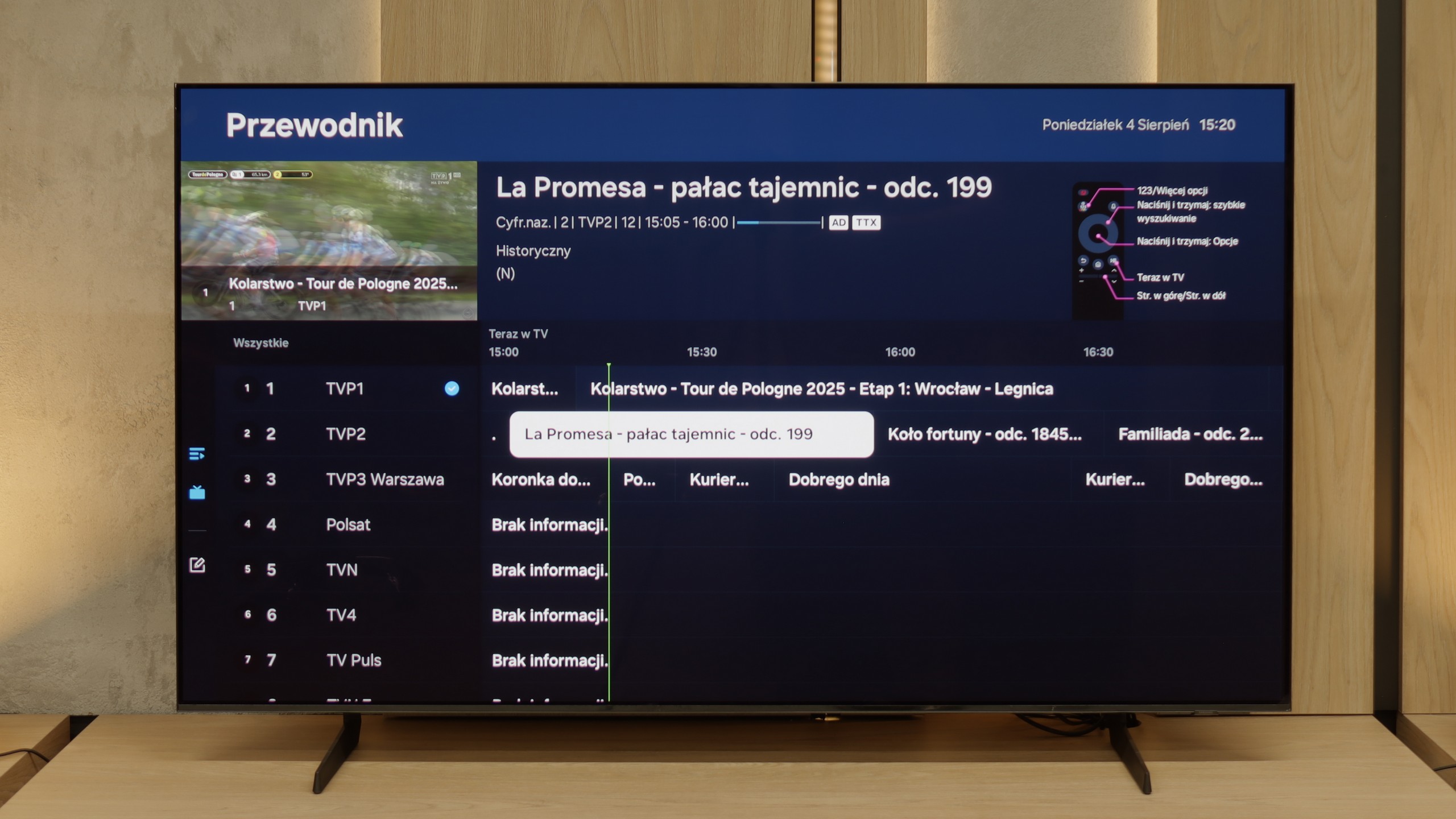
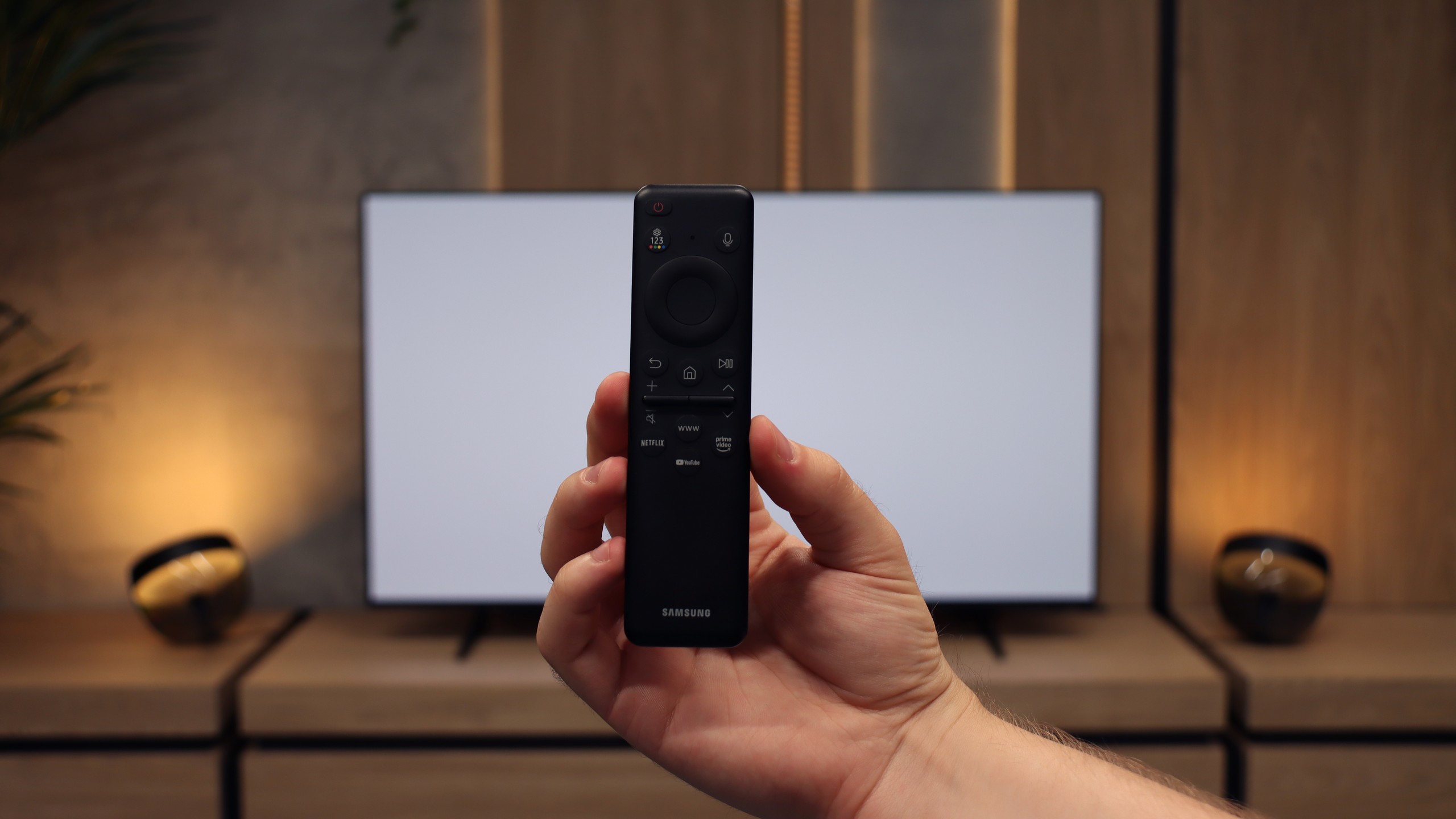
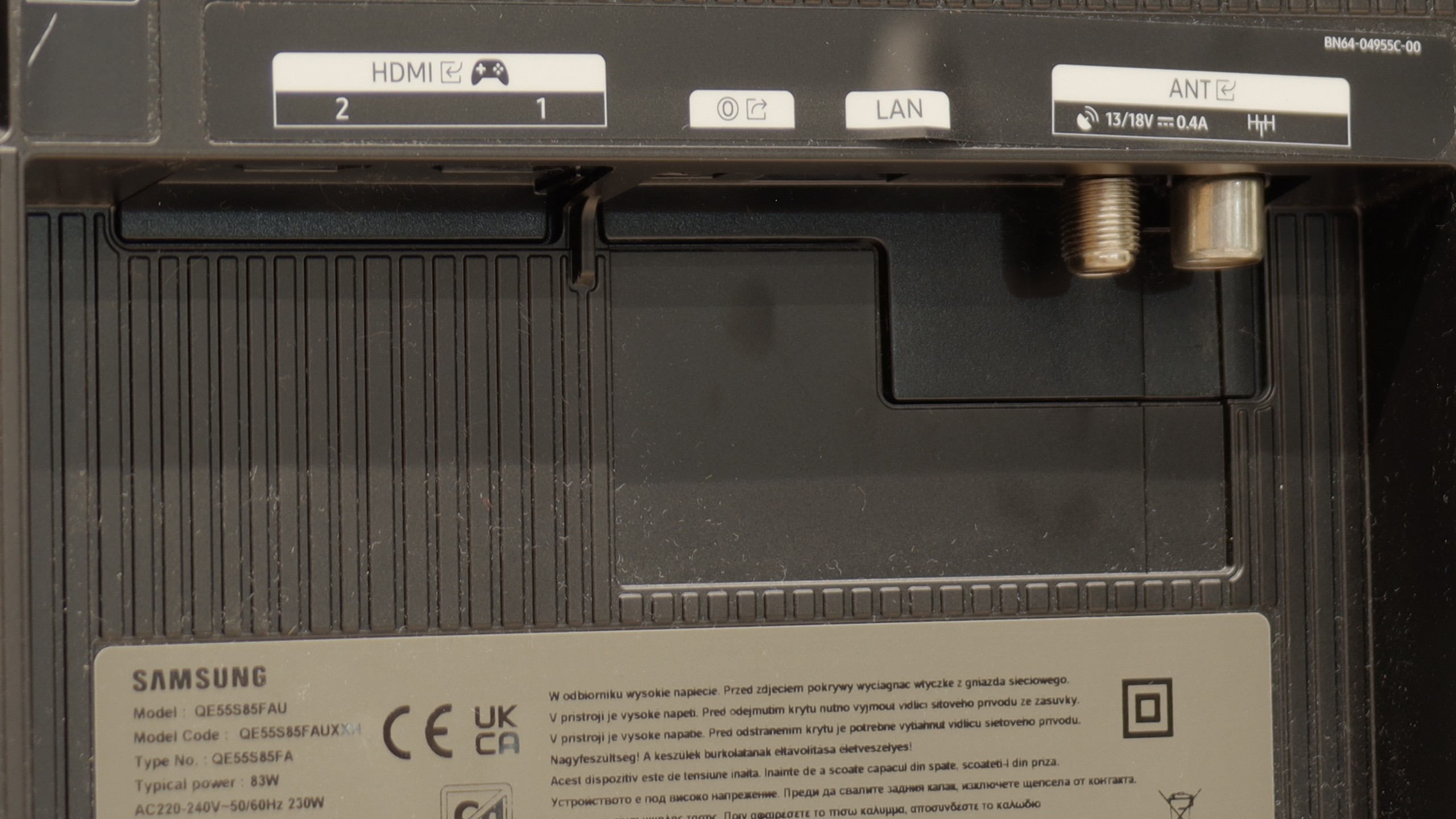
The Sony Bravia 8 runs on the Google TV system, offering an intuitive and user-friendly interface with access to an extensive range of applications. The interface is well-designed, with easy access to apps and features. The remote, similar to those from Korean competitors, can be charged via a USB-C port and is backlit, making it much easier to use in low-light conditions.
The TV provides a broad range of features that will satisfy most users. The Sony XR80 allows for program recording and easy connection to external devices via Bluetooth. However, it lacks the Picture-in-Picture (PiP) feature, which would enable simultaneous viewing of two image sources—a feature that could be useful in certain situations.
The design of the television is impressive, featuring a sturdy metal frame that adds an elegant touch. It stands on two adjustable feet, allowing for customisation of both width and height, making it easy to place a soundbar beneath the screen. While the Sony Bravia 8 is not the thinnest OLED on the market, its high-quality materials and meticulous finish ensure it presents well.
Features of the Classic S85F TV
The S85F was not really designed with fans of classic television in mind. We won’t find PiP functionality here (which is a bit surprising, because Samsung usually offers it) nor the ability to record programs to USB from the built-in tuners. Fortunately, the basics are present – teletext and a clear channel guide – so this is more than enough for regular, everyday viewing. The included remote, although simple at first glance and lacking a numeric keypad, allows for the control of multiple devices. This means that when connecting, for example, a Canal+ decoder, you don’t need to have two remotes on the table – the one from the television is sufficient.
SmartTV S85F: Tizen
The smart part is a completely different story. Tizen is one of the most advanced operating systems in televisions. It works efficiently, supports all popular internet functions – from screen mirroring, through AirPlay, to voice search. The strongest aspect of Tizen is its integration with the SmartThings app, which can act as a control center for the entire home. Of course, like any closed system, Tizen has its limitations – for instance, a smaller application library compared to GoogleTV. However, looking at the current list of available applications, it’s hard to pinpoint anything that might actually be lacking.
Playing files from USB
8.7/10
9.1/10
Supported photo formats:
Maximum photo resolution:

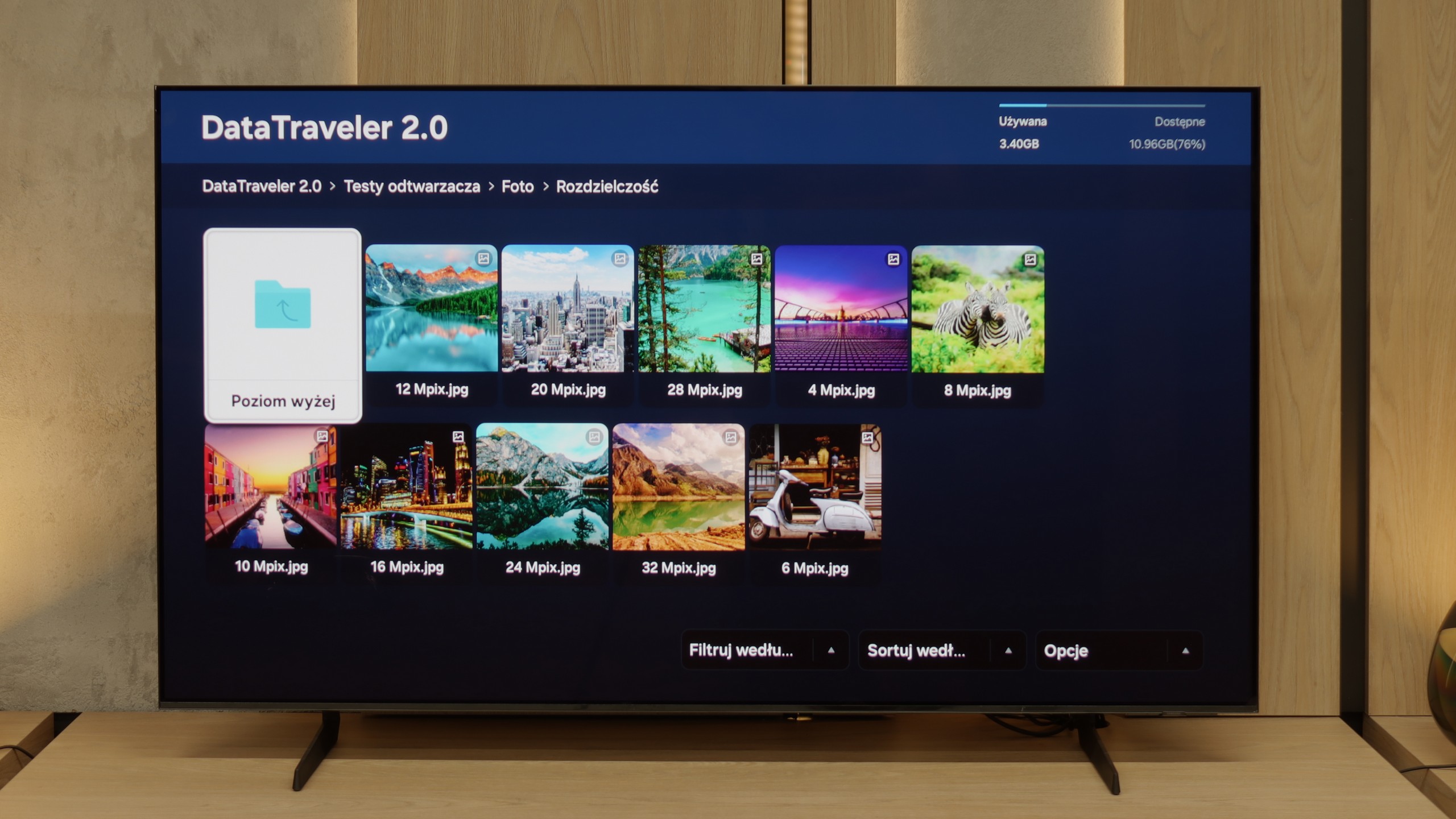
The Sony Bravia 8 will satisfy most users for multimedia playback. The built-in player supports the most popular video and audio formats, ensuring seamless access to a wide variety of content. While there are some limitations with photo playback, the Google TV system allows users to install alternative players that should address these issues.
The built-in media player in the S85F performs excellently – almost everything you plug into a USB drive or disk will be played back without any issues. Minor gaps occur only with the support for some less common photo formats, but for the vast majority of you, this will be more than sufficient. So it can be confidently said that for home use, the built-in player is more than solid.
Apps
9.6/10
8.7/10














































Sound
7.5/10
7.2/10
- Maximum volume-80dB
- Dolby Digital Plus 7.1
- Dolby True HD 7.1
- Dolby Atmos in Dolby Digital Plus (JOC)
- Dolby Atmos in Dolby True HD
- DTS:X in DTS-HD MA
- DTS-HD Master Audio
The Bravia 8 has a 50W sound system in a 2.2.1 configuration, featuring speakers mounted behind the screen under the Acoustic Surface Audio system. The sound is pleasant and well-balanced, perfectly complementing the image. In terms of audio format support, the Sony Bravia 8 performs excellently, playing all popular codecs without issues and delivering a rich, immersive audio experience.
Built-in speakers with a power of 20 W on paper may not make a big impression, but in practice, the S85F can surprise. It sounds really pleasant, and at times, you can even catch a hint of bass, which is not a given in this class of speakers. The television does not support the DTS format, which unfortunately has become the standard for most manufacturers by 2025. A nice surprise, however, is the support for Dolby Atmos. Of course, talking about "spatial" sound in the case of two speakers placed at the bottom of the casing would be a bit of an exaggeration, but it's good that Samsung offers such a feature in this model at all.
Acoustic Measurements
No acoustic data
80dBC (Max)
75dBC


